

9”




9”

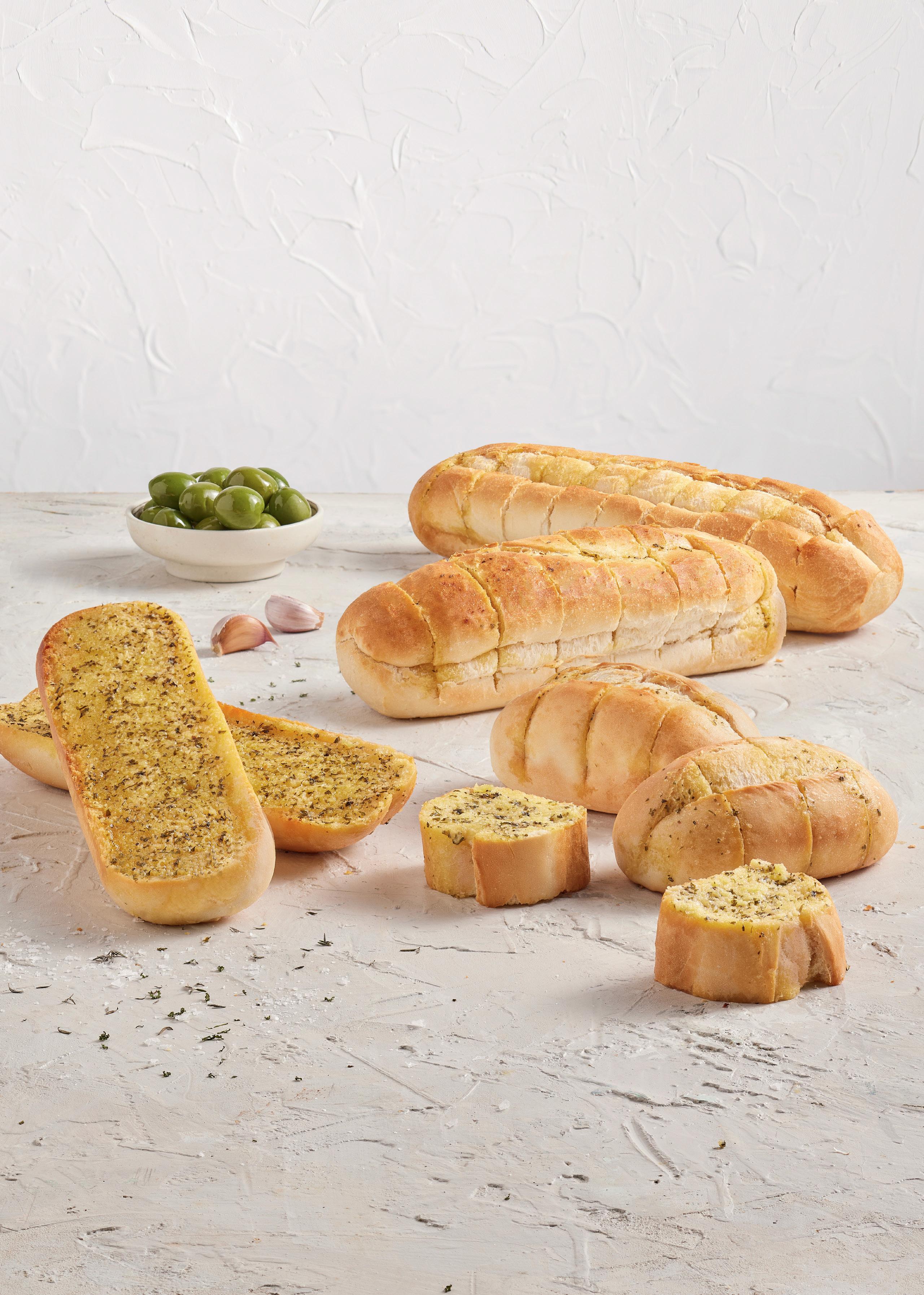
QUICK, EASY, IRRESISTIBLE
Our classic garlic bread range is specifically designed for foodservice venues that want to save
Ready to serve in just 1O minutes, our crowd pleasers are available for sharing or as individual portions to suit any meal occasion.

JULY/AUGUST 2024

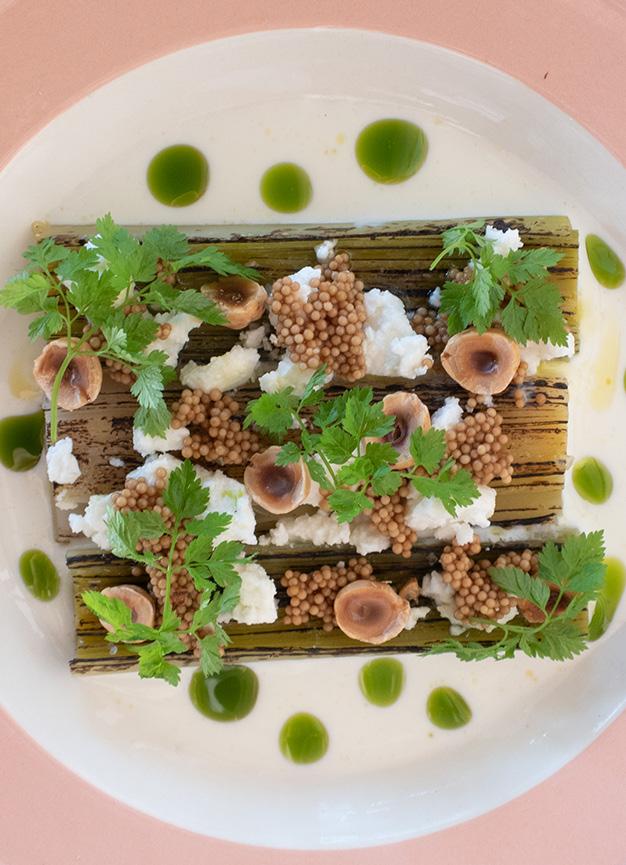
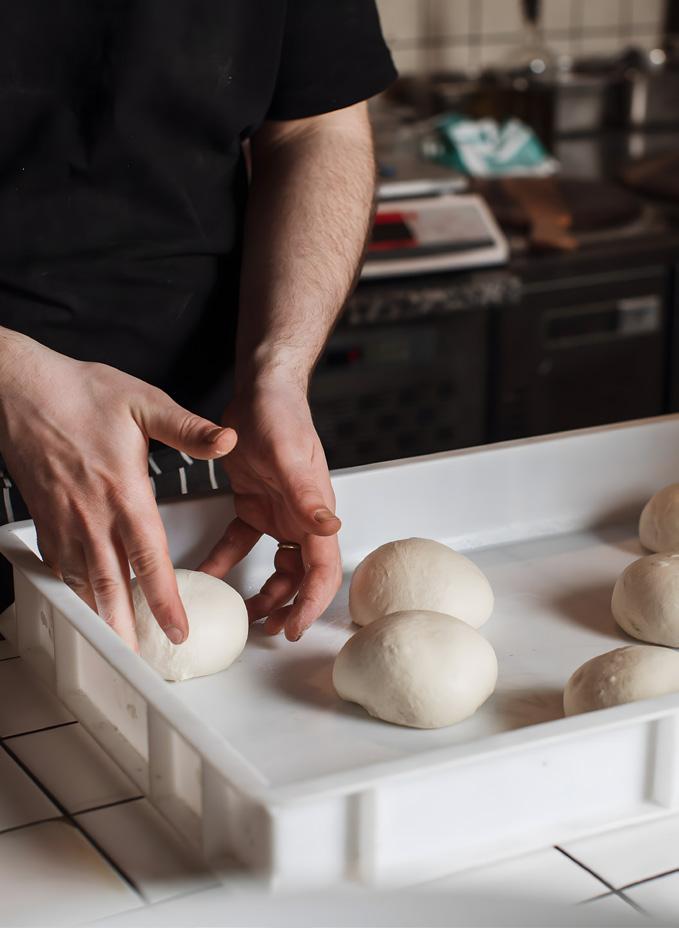
8 // IN FOCUS
Sustainability inspiration.
10 // NEWS
The latest openings, books, events, and more.
12 // BAR CART
Thirst quenchers, slow sippers, and all things beverage related.
16 // PRODUCE
Swap out lemon and lime for pomelo.
18 // BEST PRACTICE
How to create a better workplace culture.
20 // DRINKS
Three bartenders on crafting highballs.
26 // RECIPE
Master pâté and clafoutis.
28 // PROFILE
Gaspard de Rancourt on his new gig at Café Freda’s.
52 // EQUIPMENT
A mother of pearl spoon is a must for serving caviar.
54 // 5 MINUTES WITH …
Foni Pollitt from Perth’s Mayfair Lane.
30 // FINE FOOD AUSTRALIA
What you can’t miss at the upcoming trade show.
40 // BREAD
Why you should never overlook the simple starter.
44 // DIAGEO WORLD CLASS
Jake Down on representing Australia at the global finals.
50 // AUSTRALIAN PORK
Chef Darren Robertson is teaching the next generation about the versatility of pork via a new TAFE NSW program.









A WARM WELCOME to the first double issue of Hospitality magazine. From this point on, you’ll be receiving a magazine in your mailbox every second month. The move to a bimonthly print run coincides with the launch of our new website, which has undergone a refresh and is now live with the latest news, features, products, events, and more. I’m absolutely thrilled with the end result and encourage you to head over to hospitalitymagazine.com.au to take a look. While you’re there, sign up to our newsletter to make sure you don’t miss out on exclusive digital-only features as well as the most upto-date industry movements.
This issue is packed full of content, so I will start from the top and cover off the highlights. The edition kicks off with a sustainability spotlight before moving onto the subject of workplace culture.
PUBLISHER
Paul Wootton pwootton@intermedia.com.au
MANAGING EDITOR
Annabelle Cloros T: 02 8586 6226 acloros@intermedia.com.au
DEPUTY EDITOR Amy Northcott anorthcott@intermedia.com.au
As it’s citrus season, the Produce page is dedicated to the always-delicious pomelo before we head into French territory with two excerpts from Classic French Recipes and a profile on Café Freda’s new Head Chef Gaspard de Rancourt, who has made the move from Paris to Sydney. Our features cover Fine Food Australia, a new pork foodservice program launching at TAFE NSW, bread courses, and Diageo World Class before we look at the caviar spoon and finish off with Foni Pollitt from Perth’s Mayfair Lane.
I hope you enjoy this issue.
Annabelle Cloros Managing Editor
COMMERCIAL DIRECTORHOSPITALITY GROUP
Simon York T: 02 8586 6163 syork@intermedia.com.au
GROUP ART DIRECTOR –LIQUOR AND HOSPITALITY
Kea Thorburn kthorburn@intermedia.com.au
PRODUCTION MANAGER
Jacqui Cooper jacqui@intermedia.com.au
CIRCULATIONS
To subscribe please call 1800 651 422. hospitalitymag azine.com.au facebook.com/ HospitalityMagazine twitter.com/Hospitalityed instagram.com/hospitalitymag
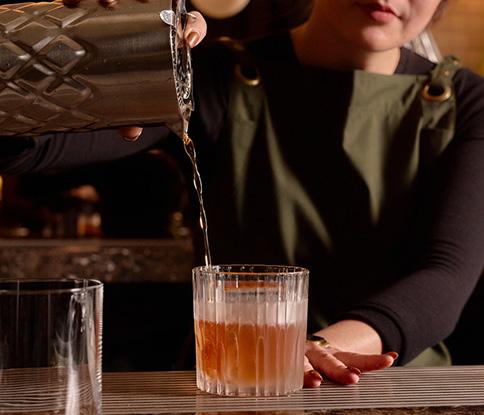


SUBSCRIPTION RATES Australia: 1 year (10 issues) = $99.00 (inc GST) 2 years (20 issues) = $158.40 (inc GST) – Save 20% 3 years (30 issues) = $207.90 (inc GST) – Save 30%
SUBSCRIPTION RATES
New Zealand: 1 year (10 issues) = $109.00 Asia/Pacific 1 year (10 issues) = $119.00 Rest of World: 1 year (10 issues) = $129.00
&



WORDS Annabelle Cloros
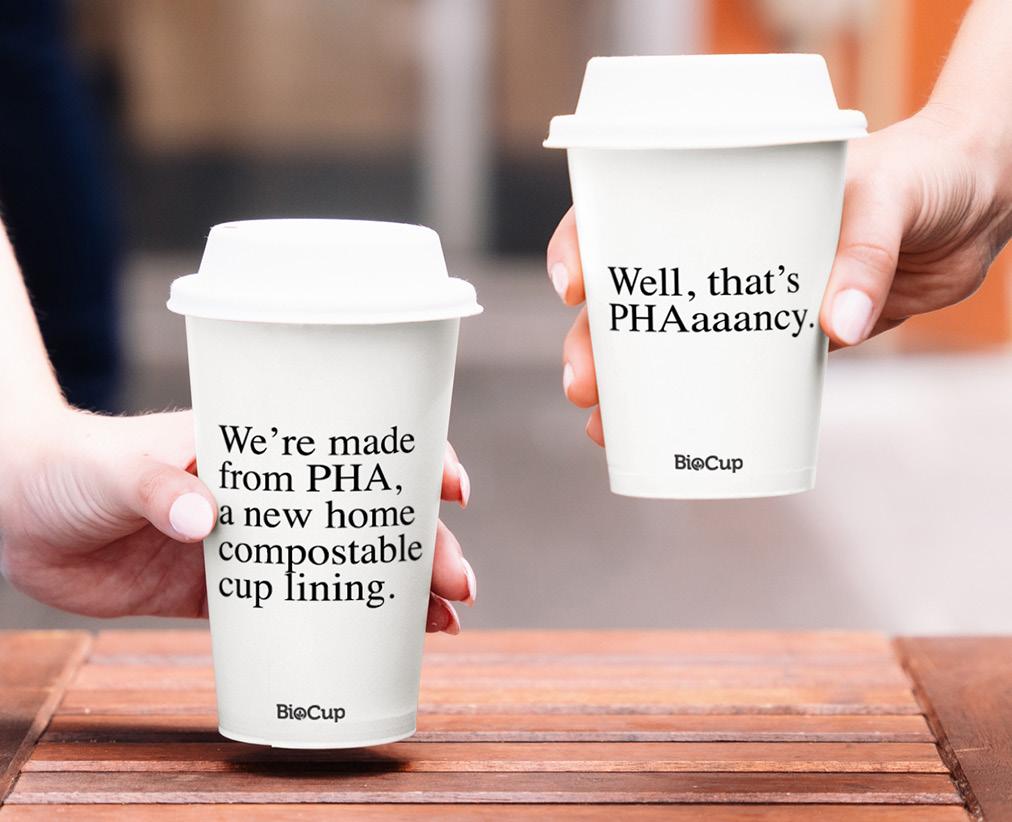
BioPak have pioneered another packaging first using PHA — polyhydroxyalkanoate — a biopolymer produced during a fermentation process that uses plant sugars and vegetable oils. The cups are made entirely from bio-based renewable resources, from the FSC responsibly sourced paper to the PHA lining, which means they are completely home compostable. The cups break down in less than 180 days in marine settings such as compost thanks to the use of marine biodegradable PHA resin. “This is a breakthrough in bioplastics,” says CEO Gary Smith. “However, our products are not designed to be disposed of in the marine environment, so we won’t be advertising it on the cup. Its ability to biodegrade quickly is not a licence to litter, but an opportunity to have an endof-life solution for people with access to a home compost.” The cups took years of research and development, and will be released later this year in 8oz, 12oz, and 16oz sizes.
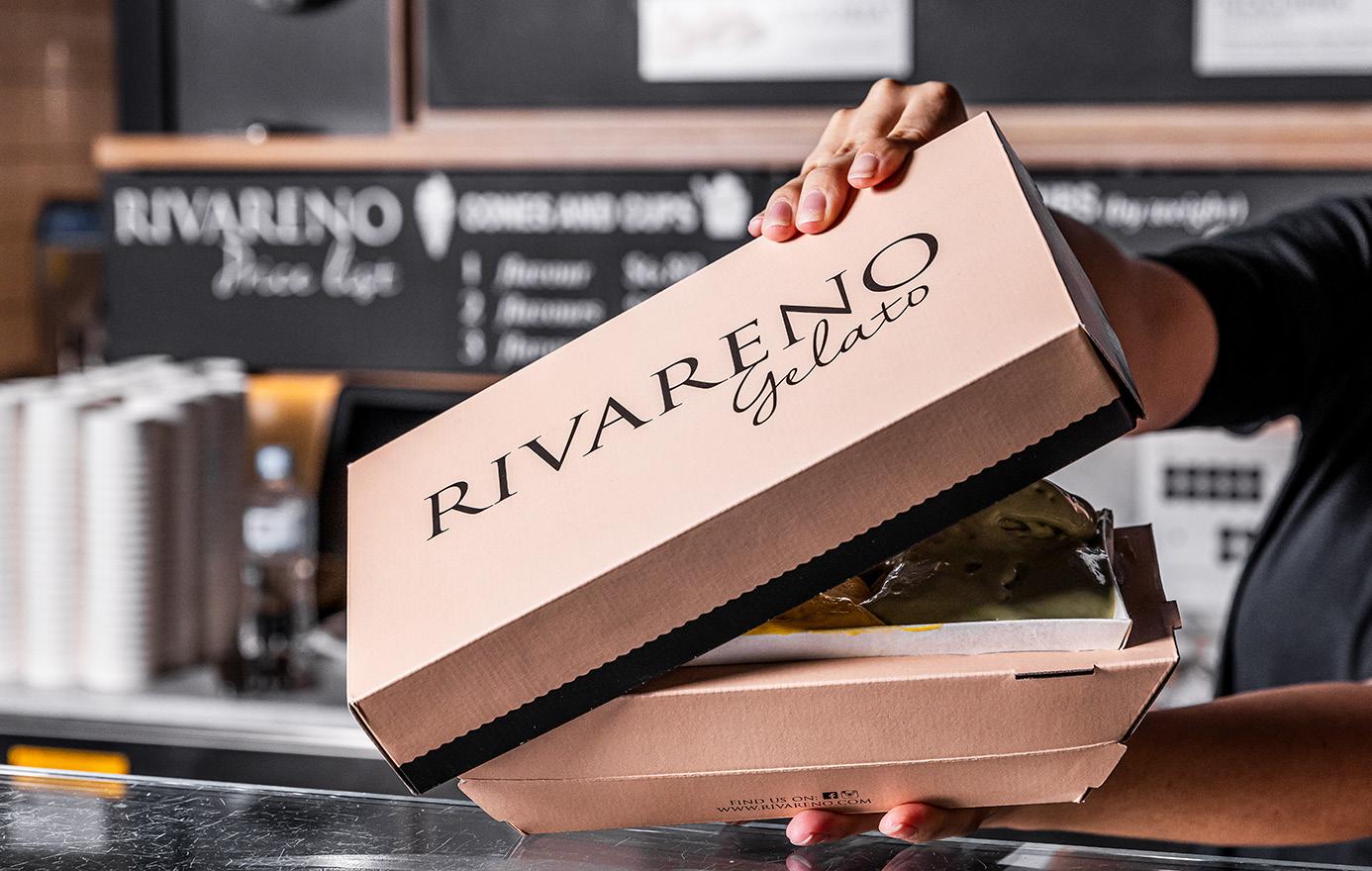
Sydney-based gelateria Rivareno is known for its high-quality products, and now the brand has rolled out a bespoke packaging solution for customers purchasing take-home gelato. Dessert businesses largely use styrofoam tubs due to the packaging’s lightweight composition and insulation qualities, but there’s often a greener way to do things. Rivareno’s new tubs are made from double-walled cardboard and are a first-to-market product in Australia. The exterior cardboard is uncoated while the interior is lined in PET. The gelato is insulated by an air barrier and remains cool during transportation. Best of all, the packaging ensures the gelato remains fresh until it’s consumed, with the packaging preventing ice particles from developing while in the freezer. Once customers have polished off their gelato of choice, the tub can be rinsed out and placed in the recycling bin.
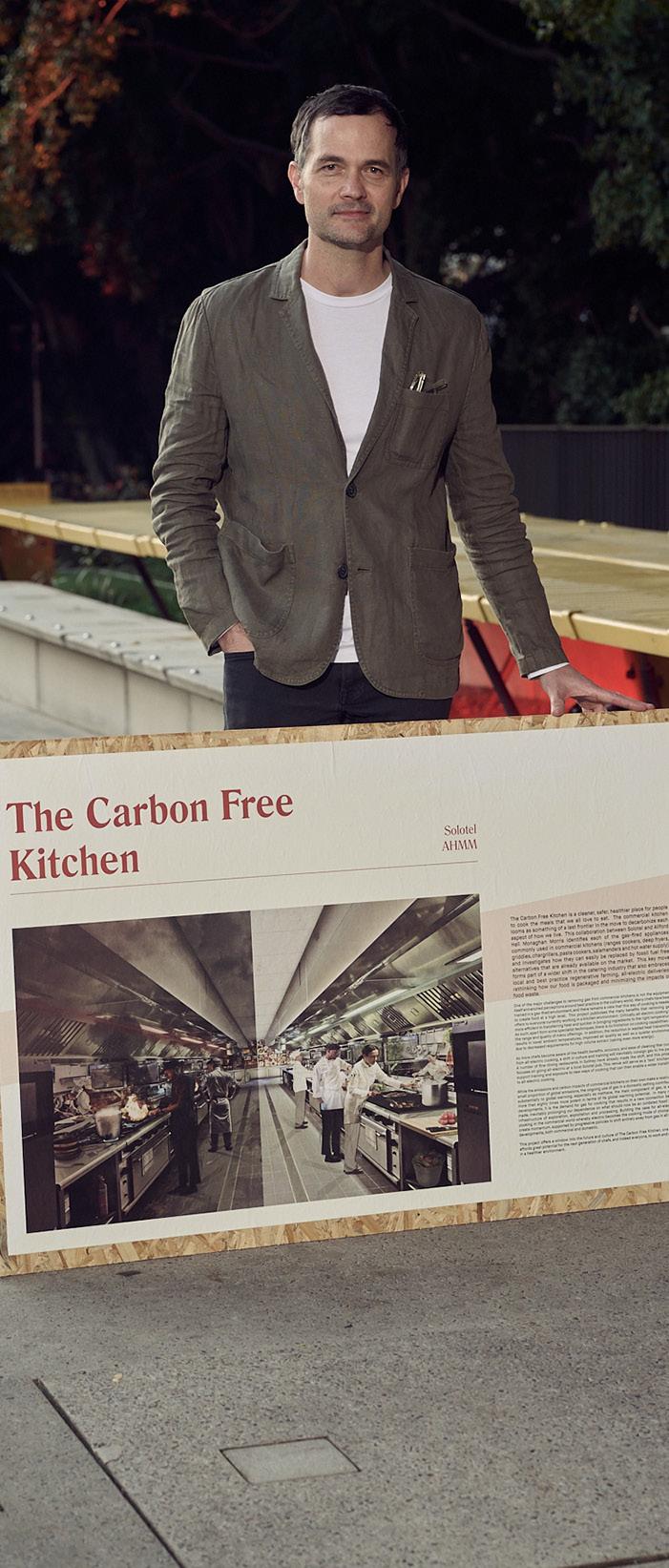
There’s been a push for kitchens to switch from gas to electric in recent years, with one of the largest operators in the country jumping on board with a new initiative. The Carbon Free Kitchen (CFK) was exhibited during Vivid as part of A New Normal Sydney, a thinktank of solutions for cities to become self-sufficient producers of clean energy and limitless water. A Solotel pub was used as a test, with the venue converting all appliances to electric. The group teamed up with Allford Hall Monaghan Morris to identify gas-fired appliances used in commercial kitchens and find fossil fuel-free alternatives. Many chefs have been trained on gas-fired appliances, but the project aims to educate chefs on the benefits of electric cooking which span from lower ambient temperatures to quieter environments and easier cleaning.
The initiative joins a broader push for change, with the Global Cooksafe Coalition (GCC) also promoting universal access to safe and sustainable cooking. GCC is working to implement fossil fuel-free cooking and the use of electric appliances powered by renewable energy in new kitchens by 2030 and existing kitchens by 2040.

The latest openings, books, events, and more.
EDITED BY Annabelle Cloros

It was the first Sydney restaurant from the trio that went on to deliver Pellegrino 2000 and Clam Bar, but Bistrot 916’s days are sadly numbered. The Potts Point building on Challis Avenue is scheduled for redevelopment, but the team are keeping a lookout for another location to rehome the restaurant. “This is not the end, but a new beginning,” says Co-Owner Dan Pepperell. “We are excited about the possibilities and can’t wait to bring it back better than ever.” Bistrot 916 is continuing to operate as usual until an official closing date is announced. bistrot916.com
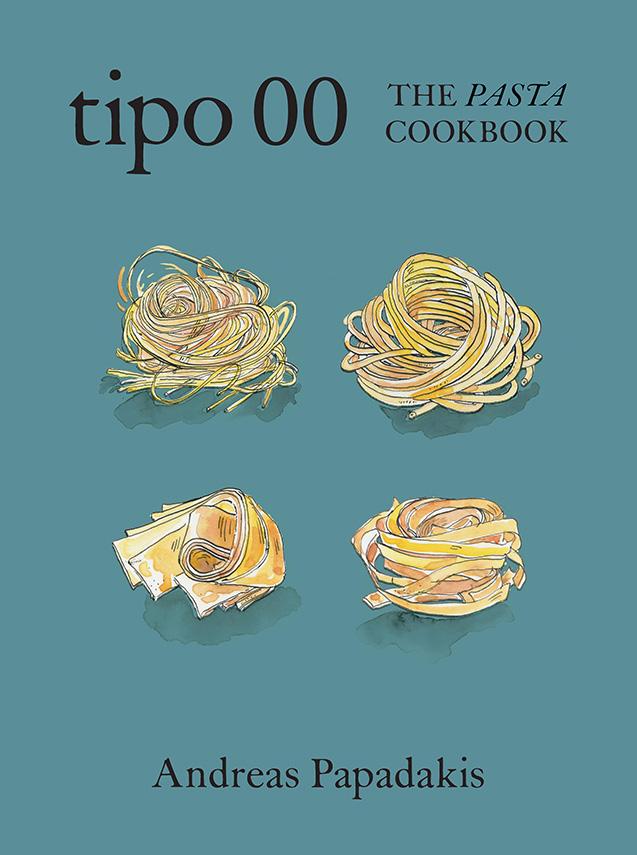

Melbourne-based hospitality group Lucas is continuing its expansion via a partnership with Cbus Property. The developer is building a $1 billion mixed-use precinct at 435 Bourke Street in the CBD, with Lucas announcing it will open two restaurants inside the tower in 2026 — an upscale Chinese concept and a Mediterranean restaurant. “Developments such as 435 Bourke Street give me a rare creative licence and a blank canvas to see how our restaurants can help transform our city and position it as a city of the future for both hospitality and work,” says Restaurateur Chris Lucas. More details to come.

Former Franca, Parlar, and Armorica general manager Alex Cameron is opening his first restaurant Table Manners. Cameron has secured a site on Macpherson Street in Bronte and plans to overhaul the location to offer guests two distinct experiences across a relaxed bar and lounge and a formal dining room. “Putting down roots in my own backyard feels right as I bring my love of European dining to Bronte,” he says. The restaurant is slated to open at the end of winter and will serve dishes referencing plates from Italy, France, and the UK. Cameron is curating the beverage program himself, which will focus on emerging winemakers as well as classic producers and vintages.
The Pasta Cookbook
Andreas Papadakis
$49.99 ; Murdoch Books
It’s one of Marco Pierre White’s favourite places to eat in the world, and now you can recreate some of Tipo 00’s recipes in your own kitchen. Andreas Papadakis’ Melbourne restaurant has long been a go-to destination for Melburnians and visitors, serving countless plates of pasta since it opened back in 2014. Papadakis has written more than 80 recipes in Tipo 00 The Pasta Cookbook including crowd favourites gnocchi with duck and porcini ragu as well as the iconic tipomisu. murdochbooks.com

Redfern will welcome a new Euro wine bar and restaurant from four long-time friends this August. Felix Colman, Toby Davis, Toby Stansfield, and Dexter Kim always dreamed about opening a venue together and Attenzione! is it. The casual concept rolls together the different experiences of the team, who have worked at some of Sydney’s finest establishments — think Ragazzi, Yellow, Fabbrica, and Lola’s. Plates are all designed to share and cover pastas as well as classics such as gnocco fritto with raw beef. “We know what makes a restaurant experience memorable, and we know what makes you want to return,” says Colman. “We’re creating a fun restaurant that we’d all personally love to visit time and time again.“
Photography by Dexter Kim
From little things big things grow, which aptly describes Single O’s Newstead location in Brisbane. The venue originally opened as a 16-seat espresso bar and has now doubled in size to operate as a café with an expanded food and coffee program. “With its extra space, dishes, coffees, and sustainability initiatives, [Newstead] gives us the chance to really showcase what we’re all about,” says CEO Mike Brabant. Signature dishes (including the avocado toast) are now available alongside a new coffee flight which sees the team serve a single origin three different ways. singleo.com.au
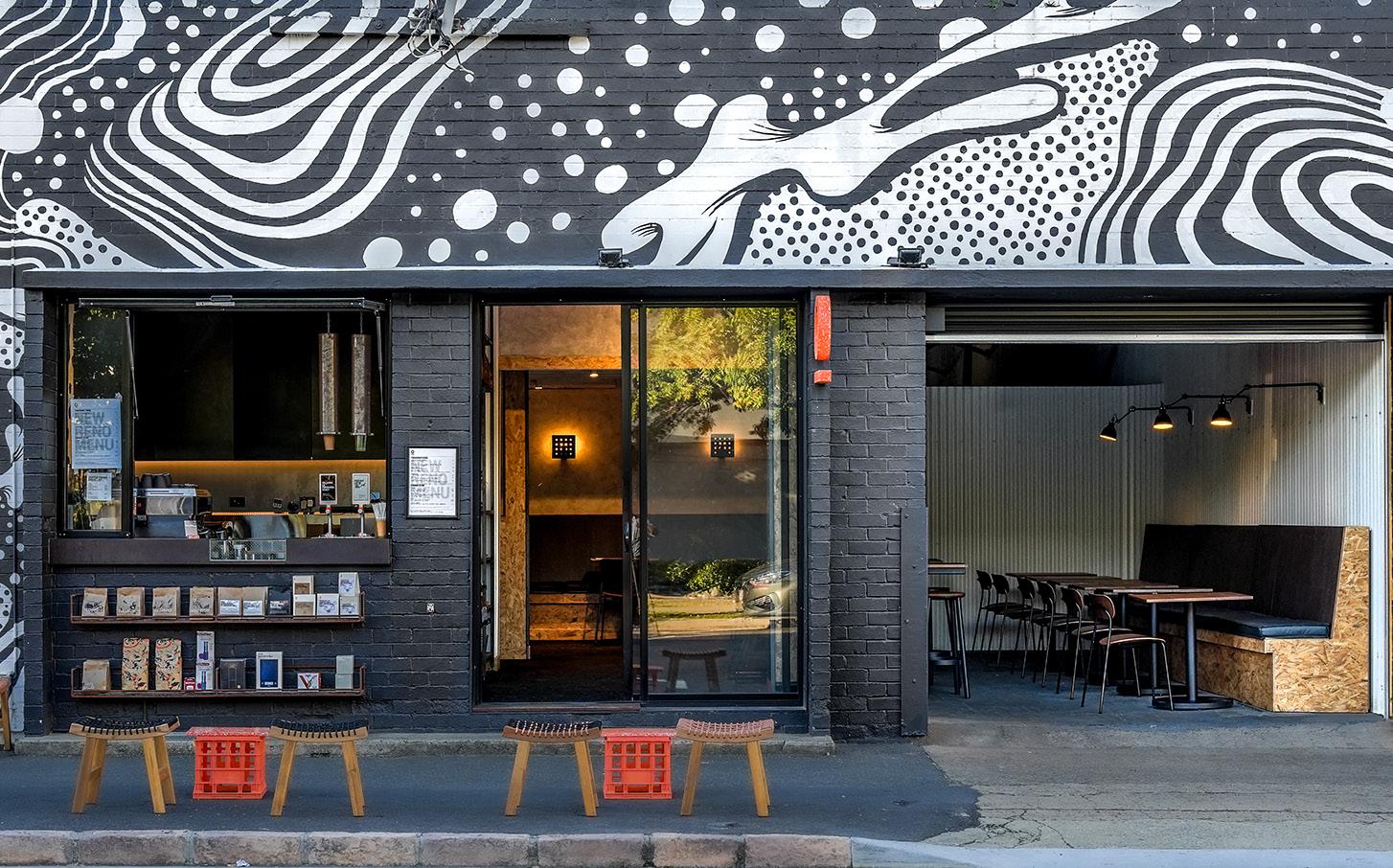

Luke Powell with David Matthews
$55 ; Murdoch Books
LP’s Quality Meats Founder and Chef Luke Powell has penned his first book for home cooks and professionals alike. The guide to sausages, charcuterie, smoked meats, and more includes 90 recipes for making and enjoying smallgoods, with each option accompanied by detailed instructions and step-by-step photography. The book also includes special features on two all-time greats — salami and brisket. murdochbooks.com
Thirst quenchers, slow sippers, and all things beverage related.
EDITED BY Annabelle Cloros

Two new sodas join Capi’s ever-expanding mixer range, with the additions now available nationally. The Victorian-based company developed the flavours after extensive industry consultation as well as customer preference analysis. Charred Pineapple features lime extract and caramelised sugar, resulting in a tart yet balanced sipper that can be mixed with spirits or enjoyed as is. Low-Sugar Lime soda is a punchier option with a hint of sweetness from agave and savouriness from pink salt, making it the perfect accompaniment to vodka, tequila, or gin. Available at leading liquor retailers. capi.com.au
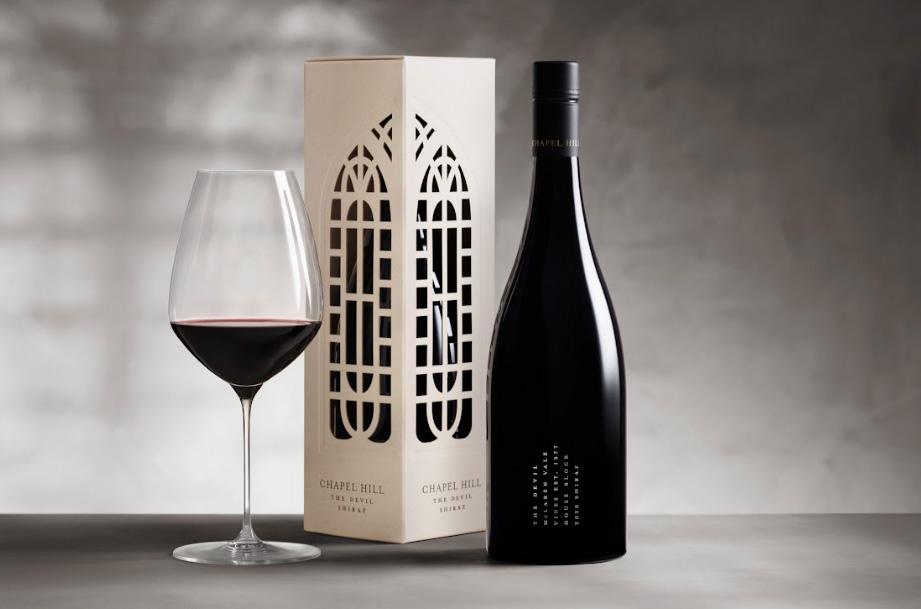
Chapel Hill Winery is renowned in the McLaren Valley and beyond, with the winery celebrating its 50th vintage with the release of The Devil Shiraz 2020. A reference to the phrase “the devil is in the detail”, the drop has been made from handharvested fruit from some of the winery’s oldest vines. The fruit was crushed and openly fermented for 12 days before it was basket pressed and aged for 20 months in French oak, resulting in a bold Shiraz with dark berry notes and roasted spices. $180. chapelhillwine.com.au
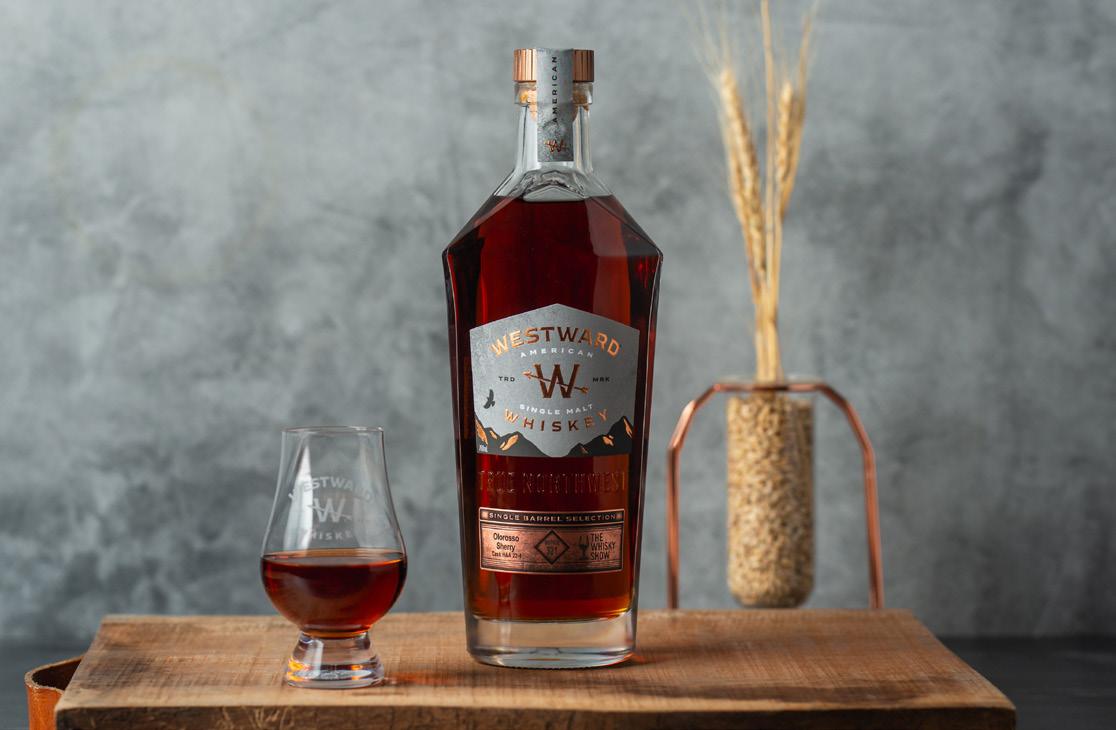
Oregon-based distillery Westward have released a new whiskey that’s undergone two rounds of maturation in different barrels. Locally sourced American ale was double distilled in custom lowreflux pot stills before being moved to new American oak barrels for maturation. The whiskey was then finished off in an Oloroso Sherry cask that previously held Palomino grapes and bottled at 55 per cent ABV. The whiskey has notes of dark chocolate, candied cherries, papaya, and peach and is now available for $159 from select retailers. westwardwhiskey.com


Champagne house Lallier has showcased the stellar growing conditions of 2020 via R.020 Brut Multi-Vintage Cuvée, the latest expression in the Reflexion range. The Champagne is primarily made from grapes that have notes of white flowers and fresh citrus. “The dry and sunny summer resulted in an early harvest, delivering intense and fresh grapes presenting a high maturity — perfect for what we were looking for,” says Dominique Demarville, cellar master and general manager. R.020’s debut also marks a fresh chapter for the house, which has rolled out a new label embossed with vine leaves, an homage to Lallier’s home in Ay, northeastern France. Available for $95 from House of Rare and select boutique retailers. champagne-lallier.com
Tassie-based Moo Brew is making winter a little more bearable with the release of a special bundle priced at $70. The collection includes six dark ales, four stouts, four winter IPAs, and a wallaby fur stubby holder to keep your mitts cosy. The specialrelease IPA has notes of coffee biscuits and a fruity palate, while the stout goes heavy on the dark malt and hop-driven bitterness. The American brown ale is a little lighter thanks to roasted malt notes and was named the Best Amber/Dark Ale at the 2024 Australian International Beer Awards. moobrew.com.au

Expressions of interest for operating the revitalised Awaba House open on Wednesday 31 July 2024.
Expressions of interest for operating the revitalised Awaba House open on Wednesday 31 July 2024.
Nestled on the picturesque shores of Lake Macquarie, just 90 minutes north of Sydney, this iconic venue offers sweeping waterfront views and sits next to a vibrant art museum.
Set to become a top destination for dining and events, Awaba House blends historic charm with contemporary flair, promising a unique hospitality experience.
With over $6 million invested in its refurbishment, this is a prime opportunity for seasoned operators to customise and create a standout function centre, restaurant, or cafe.
219,000 population
6 million people within 150km
1.6 million tourists per year
Awaba House is expected to be operational by late 2025.
Expressions of Interest close 4pm Wednesday 11 September 2024.
LAKEMAC.COM.AU/AWABA - HOUSE
How packaging can communicate your brand.

HAVING A STRONG brand presence is a vital ingredient for the success of any hospitality business. Operators must consider whether they are taking every opportunity they can to display brand, logo, and identity both on- and off-premise as well as online. Packaging is one of the best ways to communicate your brand to existing and new customers.
Director Gavin Williams from Melbournebased coffee roaster Ranges Coffee and packaging company Re-Stox understands how important good brand packaging is for a business. Re-Stox supply bespoke coffee roasting and hospitality packaging supplies along with custom printing services for coffee bags, wine bags, and carry bags for retail purchases, corporate gifts, and takeaway food.
During a visit to the Melbourne International Coffee Expo, Williams discovered the Trimatt ColourStar AQ V digital colour print machine which sparked an idea on how he could further elevate Re-Stox’s services. Williams became aware of just how useful the Trimatt system was, with the machine allowing him to offer custom solutions to clients as well as exercise control over order quantities and lead time.
The Trimatt ColourStar AQ V enables Williams and the Re-Stox team to print quickly and efficiently on a range of
materials in a short-run quantity at an affordable price point. The machine prints on more than just coffee bags, removing the need for hand-applied labels and outsourced print jobs for the company’s contract roasting clients and regional wineries, restaurants, cafés, and any business requiring carry bags.
The technology has allowed Re-Stox the opportunity to work with new customers and identify business opportunities for the future. The Trimatt ColourStar AQ V has also led to the redesign of Ranges Coffee’s packaging to better communicate the brand to clients and customers. Williams believes printing in-house has been a better solution for the business compared to printing large amounts overseas.
With the help of the Trimatt ColourStar AQ V, Ranges Coffee and Re-Stox will continue to develop custom packaging solutions. The success of the Trimatt system has been exciting news for Trimatt’s Sales and Marketing Coordinator Mel McFarlane, who is thrilled the product has helped the businesses target new markets, increase profits, and boost efficiency.
Trimatt is proudly demonstrating the ColourStar AQ V for the first time at Fine Food Australia in September at stand HJ37. ■
To see Trimatt’s full range of printing systems, visit trimatt.com
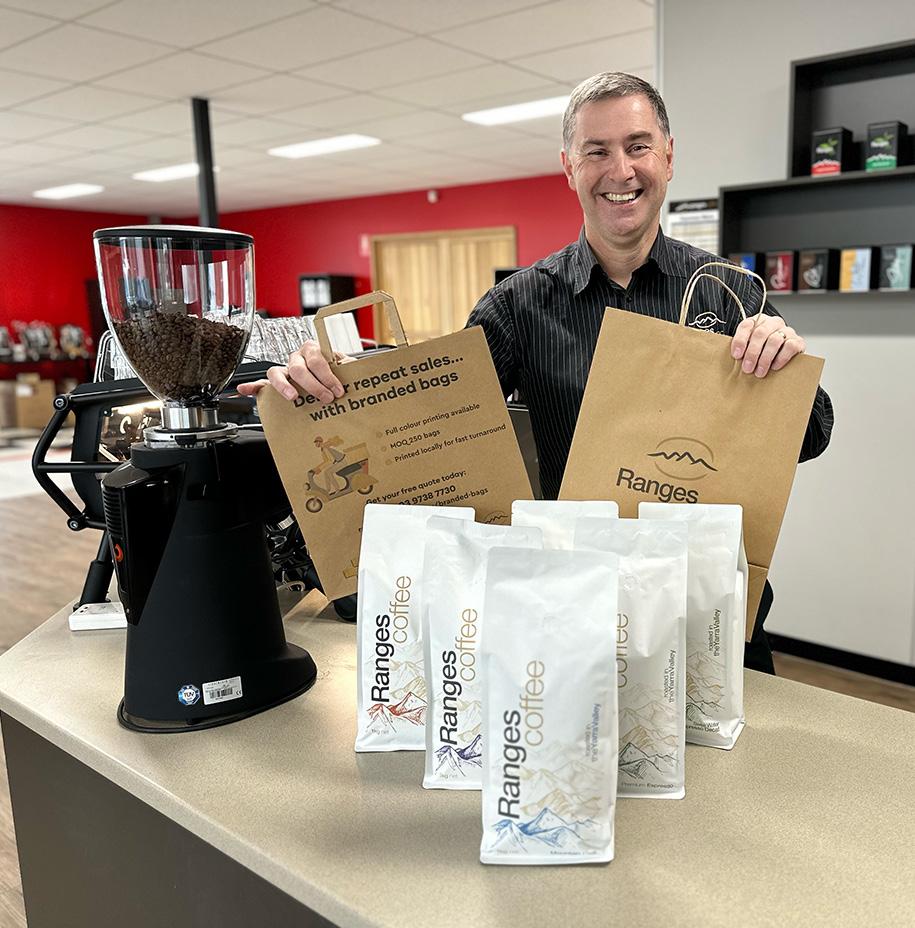
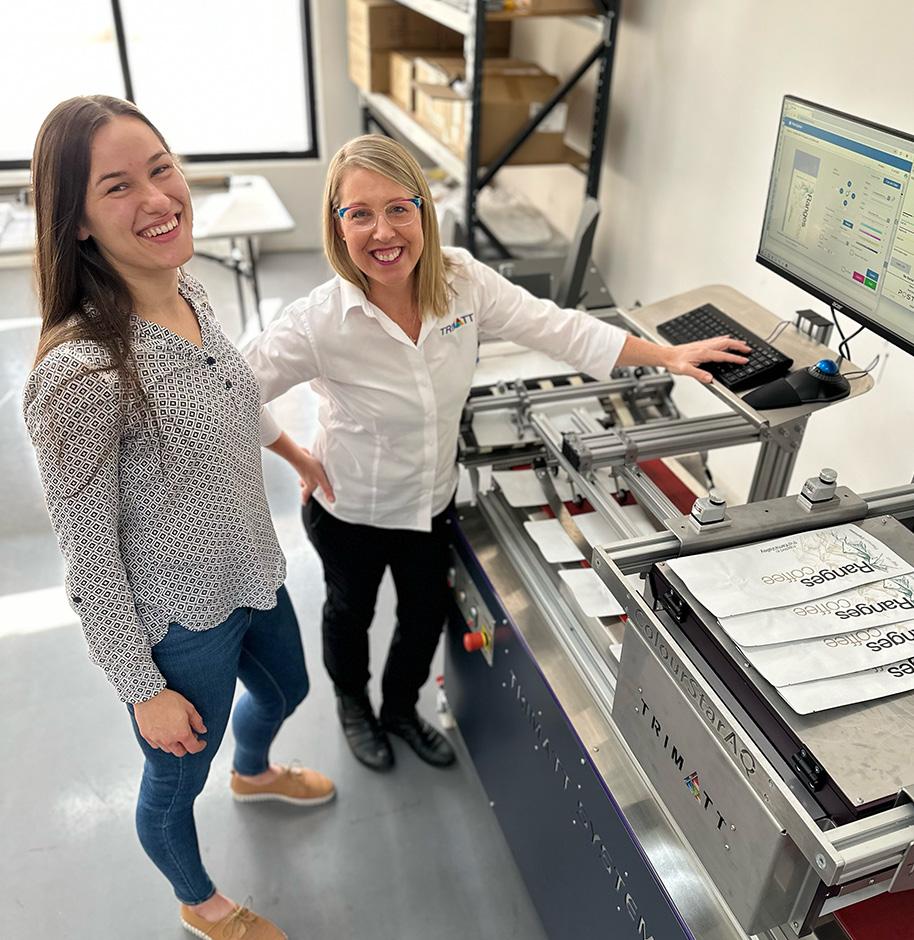

Symbol of prosperity and prayer in China
Juice can be used in marinades to tenderise proteins
Can replace grapefruit in a Paloma
Usually around 11–18 segments in each fruit
Non-hybrid citrus variety

Key ingredient in Thai salad yum som-o
Grows 15–30cm in diameter
Rind can be green, yellow–green, or bright yellow
Everything you need to know about the king of citrus.
The pomelo, aka Citrus maxima , takes out the title of the largest member of the citrus family. The fruit can grow to the size of a basketball and comes in around 22 varieties. Pomelos are part of a group of non-hybrid citrus, which are used to cultivate fruits such as grapefruits, oranges, and tangelos.
The citrus is believed to have originated in South-East Asia, where it is still widely enjoyed today for its rind, flesh, and juice. In China, the pomelo is associated with prosperity and is often eaten during Lunar New Year. It is given as a gift during China’s mid-autumn festival as a symbol of prayer.
The pomelo is also grown in the Caribbean and across California and Florida in the United States. Here in Australia, pomelos are produced in Far North Queensland, the Northern Territory, the Murray Valley region of New South Wales and Victoria, and the Riverland in South Australia.
WORDS Amy Northcott
Trees thrive in positions of full sunlight combined with a hot and rainy climate. The trees can grow in most types of soils but require good drainage to prevent disease. Pomelo trees are covered in glossy, green, oval-shaped leaves along with large white flowers sized at 2.5cm. Pomelo trees have low, dense canopies and reach 6–13m in height. Growing a pomelo tree from seed can be a lengthy process, with trees not fruiting until the eight-year mark.
Pomelos are typically 15–30cm in diameter and are circular or teardrop in shape. Depending on the variety, the fruit’s rind can be green, yellow–green, or bright yellow. The rind should be removed before consumption, with the fruit’s flesh covered in spongy white pith that also needs to be taken off. Each fruit contains around 11–18 segments, which are yellow, pink, or red in colour.
The flavour of a pomelo depends on the variety, but is comparable to a milder grapefruit with less sour and bitter notes. Some varieties are on the sweeter side and have floral or honey notes.
Culinary applications
Pomelo is often consumed as is, but can also be incorporated into sweet and savoury dishes much like other citrus fruits. It can be juiced and used as a substitute for lemon in a vinaigrette, dressings, and marinades. The high acidity levels of the juice make it a great option for tenderising proteins. The fruit is also often used to make marmalades, jams, and fruit-based desserts for a hint of freshness. Popular Thai salad yum som-o is made from dried shrimp, peanuts, coconut, fragrant herbs, and segments of pomelo. The peel of the fruit can be candied, with chefs also covering strips of the rind in chocolate for a sweet–tart treat. ■
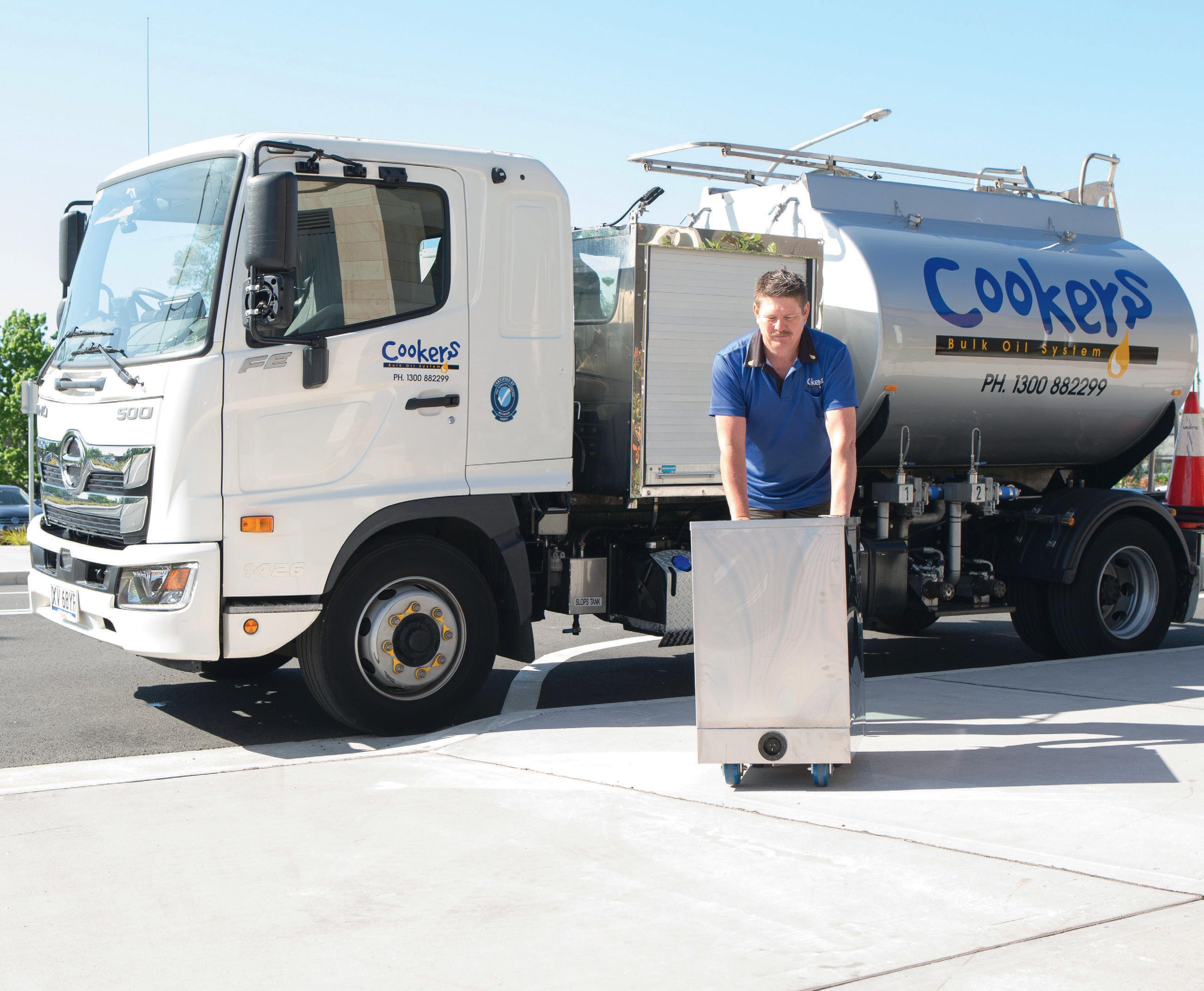


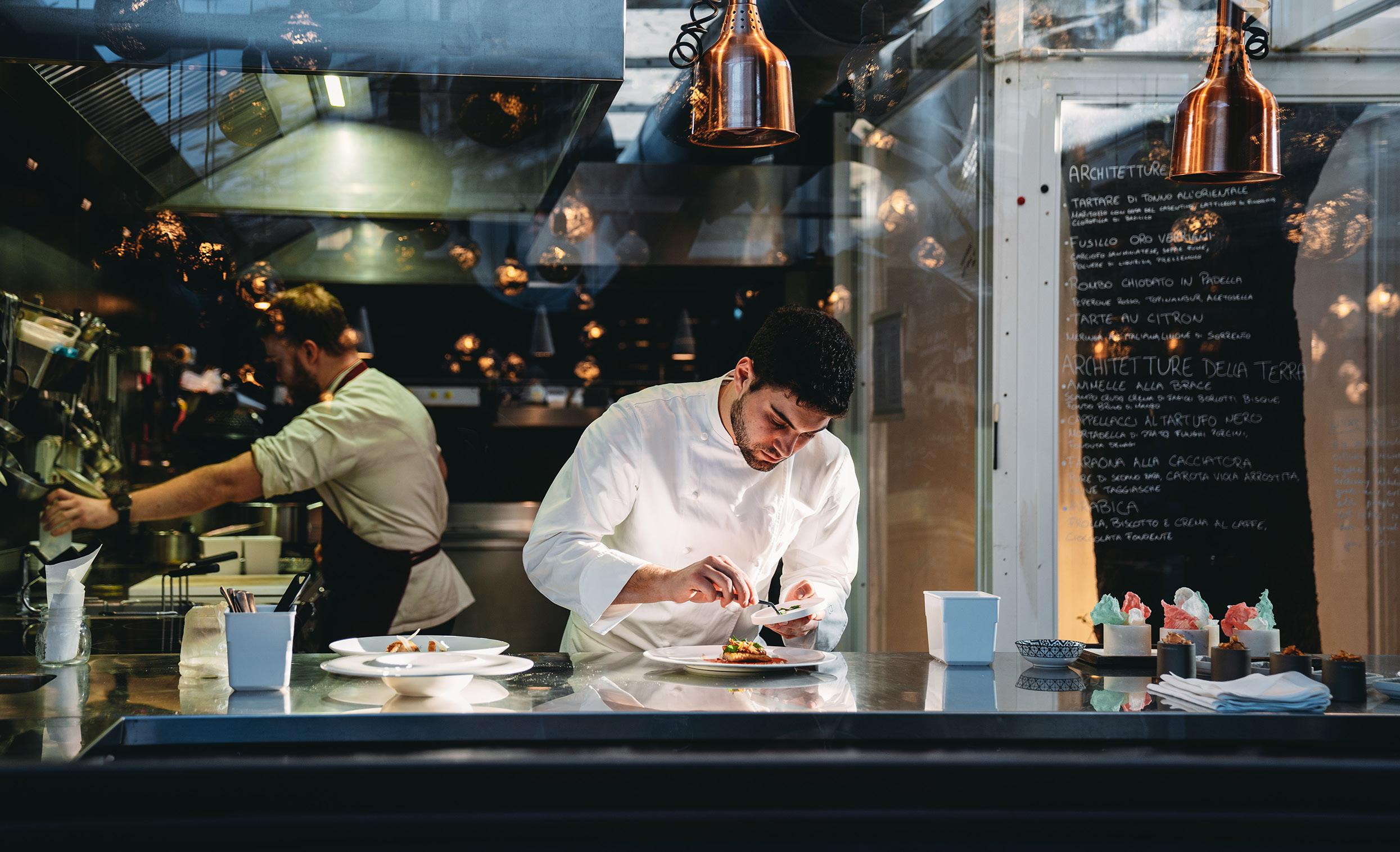
Tips to create a positive workplace environment.
WORDS Ken Burgin
IT IS NOT about having classical music on your playlist — it’s about shared values, positive attitudes, good collaboration, and high standards. Add in teamwork, companionship, and good communication between management, fellow workers, and those you supervise. It’s why people stick around in a job, and usually missing from businesses that endlessly complain about staff shortages.
Let’s break ‘culture’ into parts, starting with the most important — who leads from the top? The old saying, “The fish stinks from the head down“ still applies, and if there’s high absenteeism, laziness, or difficulty in holding onto people … boss, please look in the mirror. Your job is to set a positive example in your behaviour, work ethic, and attitude.
Every good business will have open, honest, and frequent communication. It could be a 10-minute daily huddle, a noticeboard, or WhatsApp group where people say hello each morning and hear about new menu items, service changes, or shift requests. If you don’t communicate constantly and people need explanations, they will ask a buddy or make it up … and both could be wrong.
Hospitality loves to use the word ‘team’, and a sporting comparison is useful — a successful netball team has regular training, keeps track of numbers (the score), and works towards a goal (winning). If people aren’t doing their best, they are given extra coaching or they’re let go — the rules are written down for everyone to follow. Good teams don’t just happen by chance; leaders choose the players carefully and work to keep them productive and happy. Extra events such as occasional outings, a Christmas party, or visiting a trade fair will lift morale. A strong culture includes recognition and rewards for those who work hard and achieve. Good pay goes without saying along with a public acknowledgement of the team or the person who did an amazing job on the weekend.
Most hospitality workplaces are made up of workers who come from across the world. If racism or harassment occurs, it needs to be handled immediately — everyone is watching, and these issues don’t sort themselves out. It’s not too much to put up a sign declaring your positive support for diversity, inclusion, and equality.
Hospitality strategist Shaun de Vries deals with culture issues in every company
he works with. “There needs to be a good human in charge who actively listens and cares about staff,” he says. “Care about your people first, and they’ll look after the customers. Share the founder’s message and have clearly written values, a mission statement, and a code of conduct. There’s no point having values if you don’t talk about them and use them all the time.”
When conflict happens, it should be handled and requires extra skills from managers and head chefs. Stronger systems (and good recruitment) can often heed off disagreements before they arise. Investing in training also increases loyalty and job satisfaction from menu briefings and quizzes to suppliers demonstrating new products, sharing relevant YouTube videos, and sponsoring formal qualifications. Finally, the physical environment should be welcoming, clean, and easy to work in. It means functional equipment, lockers for bags, a space for breaks, and a high standard of cleanliness. If it’s chaotic and disorganised, you’ll attract people with the same mindset. It’s over to you, boss. The elements of good culture are simple, and they start at the top. ■


Three bartenders share how they’re experimenting with the highball format.
WORDS Amy Northcott
PHOTOGRAPHY Pew Pew Studio for La La Group
THE HIGHBALL IS one of the most straighforward cocktails in the book. Simply combine one part spirit with two parts soda and throw in an ice cube — your cocktail is served. While it may look ‘easy’, there is more to the highball than meets the eye. The drink’s format allows plenty of creative space for bartenders to experiment with different spirits, mixers, and garnishes. Hospitality covers highball options at Moku and The White Horse in Sydney and Molly in Canberra.
The first record of the highball can be traced back to 1895 in The Mixicologist, a book written by US barman Chris F. Lawlor who worked at Burnet House in Cincinnati. The recipe for the ‘High Ball’ listed syphon seltzer, a lump of ice, and a one-half jigger of brandy or whiskey served in a thin ale glass. Iterations of the cocktail continued to pop up in the years following, which typically featured whiskey as well as scotch and brandy.
The highball format experienced a surge of popularity when it was adopted by Suntory in
Japan. Owner Shinjiro Torii opened a string of Tory’s bars during the 1950s and ’60s, which served highballs made with Suntory whisky topped with soda water. Highballs went on to become synonymous with post-work drinks and remain popular at izakaya bars across the globe.
Fast-forward to 2024 and the highball largely still revolves around whisky. Charles Chang from Japanese bar Moku believes it’s a cocktail that can help guests become acquainted with the dark spirit. “A highball is the best way to discover different whiskies,” he says. “The highball dilutes the whisky to an enjoyable alcohol level to avoid burning tastebuds and extend the flavours.” Moku serves a range of Japanese whiskies, which are available as both nips or in a highball. While Chang admits whisky is his go-to spirit for the cocktail, he also uses shochu, gin, Sherry, and wine-based aperitifs such as Lillet Blanc across the seasonal highball menu. Moku is currently offering a Tomato Salad highball which features bush tomato shochu, kabosu,
umeboshi tomato water, kombu dashi, and tomato stem soda. “It’s inspired by Japanese whole cherry truss tomatoes pickled with umeshu and dashi vinegar — [it’s] a super refreshing, umami, herbaceous, and low-ABV [drink],” says Chang. The drink is served in a cold highball glass with a long, Collins-style ice cube and tomato leather garnish. “I personally love the plummy, umami, and refreshing [qualities of the] drink. It’s a perfect first drink before moving to a whisky highball.”
Highballs are popular at Moku, especially the yuzu option which is made with yuzu juice, marmalade, and shochu. The team are big fans of the format, which allows bartenders to develop different flavour combinations while educating guests on the nuances of Japanese whiskies. “We have been experimenting with local bush food, Japanese herbs, and flavoured soda waters with various CO2 pressures.”
Wintour Phelps from Molly reaches for whiskey when creating a highball. “You can
call me biased, but whiskey is the answer,” says the venue manager. “Whiskey is one of the broadest categories of spirits around today and there really is something for everyone.” Phelps also believes the cocktail is a more approachable option for guests who may not know much about whiskey or usually enjoy it. “Whiskey brings bold flavours that can stand up well to other elements in the drink. It brings its own complexities. I’m particularly fond of bourbon, but won’t pass up a great single malt either.”
The cocktail list at Molly is an extensive one — Phelps cites hundreds of options — many of which are highballs. The venue manager has recently been favouring American-style highballs such as the Bodega Buck which teams bourbon with Amontillado Sherry, ginger, lime, Angostura bitters, and soda. The gin-based Chinatown Ricky (gin, Fino Sherry, lime, sugar, mint, and soda) has also been on rotation. “Both offer vastly different drinking experiences but are equally enjoyable,” says Phelps.
“Highballs are a vessel to showcase flavours in a simple way, although it requires a keen eye for balance.”
– Michael Chiem


“There really is a highball for everyone — you just have to ask your bartender.” – Wintour Phelps

Over at The White Horse, Michael Chiem and the team are using the highball format for a zero-proof option. “We look at non-alcoholic and alcoholic drinks in a similar way,” he says. “Highballs are a vessel to showcase flavours in a simple way, although it requires a keen eye for balance.”
The White Horse’s highball features a combination of Seedlip Spice, wild honey, and a pepper berry and quandong soda made in-house. “We extract the flavours over a few hours with some gentle cooking alongside some complementary spices and citrus peels,” says Chiem. “The mixture is then strained finely, which is key to great carbonation, and then chilled before it’s combined with Seedlip Spice, honey for body, and citrus to balance.”
For Chiem, the highball is a chance to showcase the vibrant flavour profiles of two of his favourite native ingredients. “Quandong brings a beautiful, earthy, peach iced tea flavour,” he says, “while pepperberry can be likened to an aromatic cross between allspice and cloves. It has a really beautiful numbing sensation to it.”
While simple to put together, the highball is a vessel for creativity. “When made well, even the simplest of highballs have a great story to tell,” says Chiem. “It should let the main ingredients shine in a subtle, refreshing, and uplifting way and make you want to keep coming back for more.”
The ever-growing list of spirits, sodas, and fresh ingredients that can be used in cocktails means the drink can cater to a wide range of guests, too. “Highballs are cocktails that combine easy drinking with a variation of flavours,” says Phelps. “There really is a highball for everyone — you just have to ask your bartender.” ■

















Future Menus, a comprehensive, global trend report by Unilever Food Solutions, is designed to help you stay ahead of the culinary curve.
The 2024 edition identifies eight global trends shaping the foodservice industry, drawn from the collective knowledge and

with SCAN TO DOWNLOAD YOUR FREE COPY of Future Menus 2024 and register to access ongoing updates about the trends that are exciting the next generation of diners.
expertise of our Chefs and foodservice partners across the globe.
The report’s findings have been translated into practical, action-driven solutions for foodservice operators, including recipe suggestions, preparation techniques and ingredient solutions.




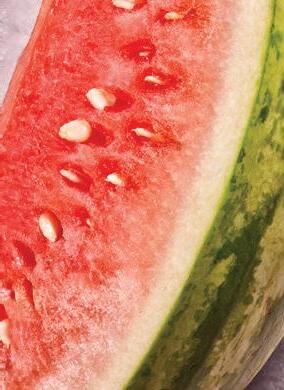


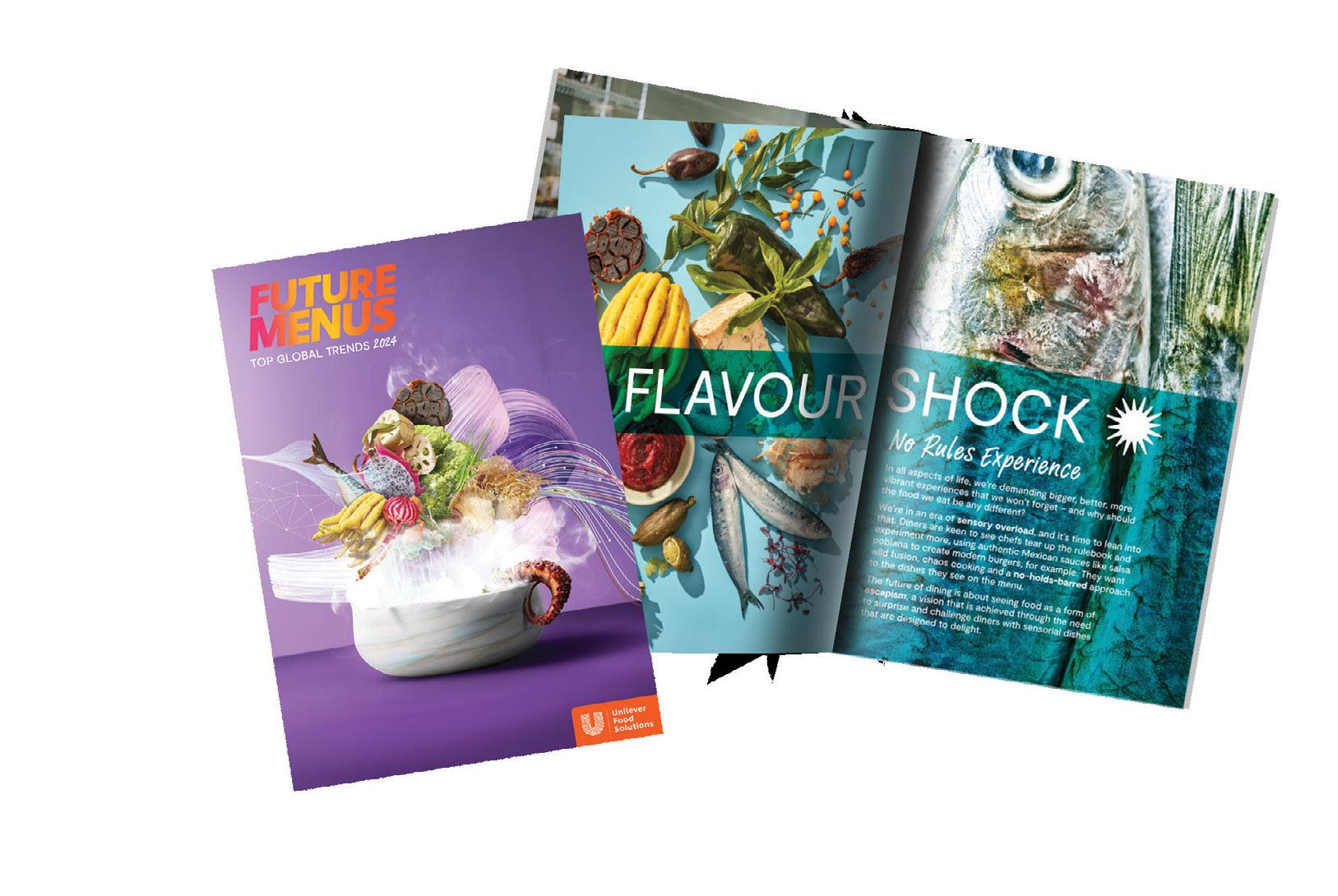

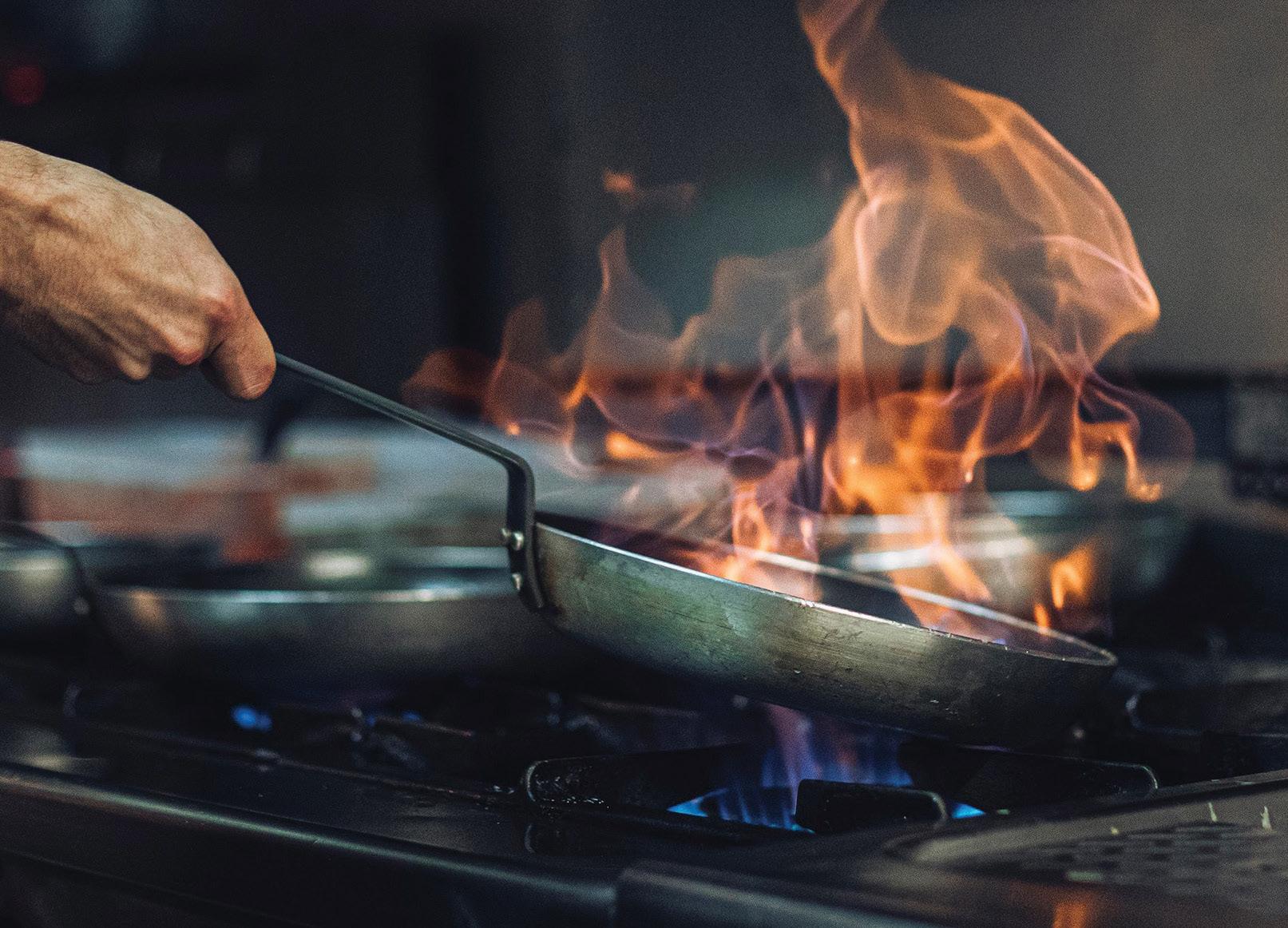

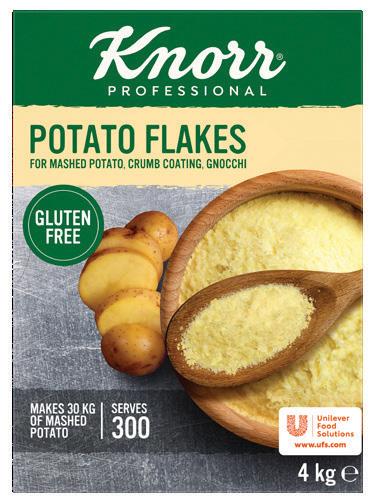




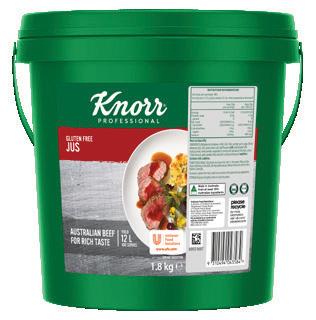
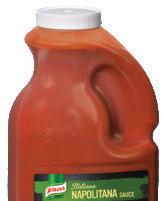





Recreate two classic dishes from Ginette Mathiot’s tome on French cookery.
WORDS Ginette Mathiot
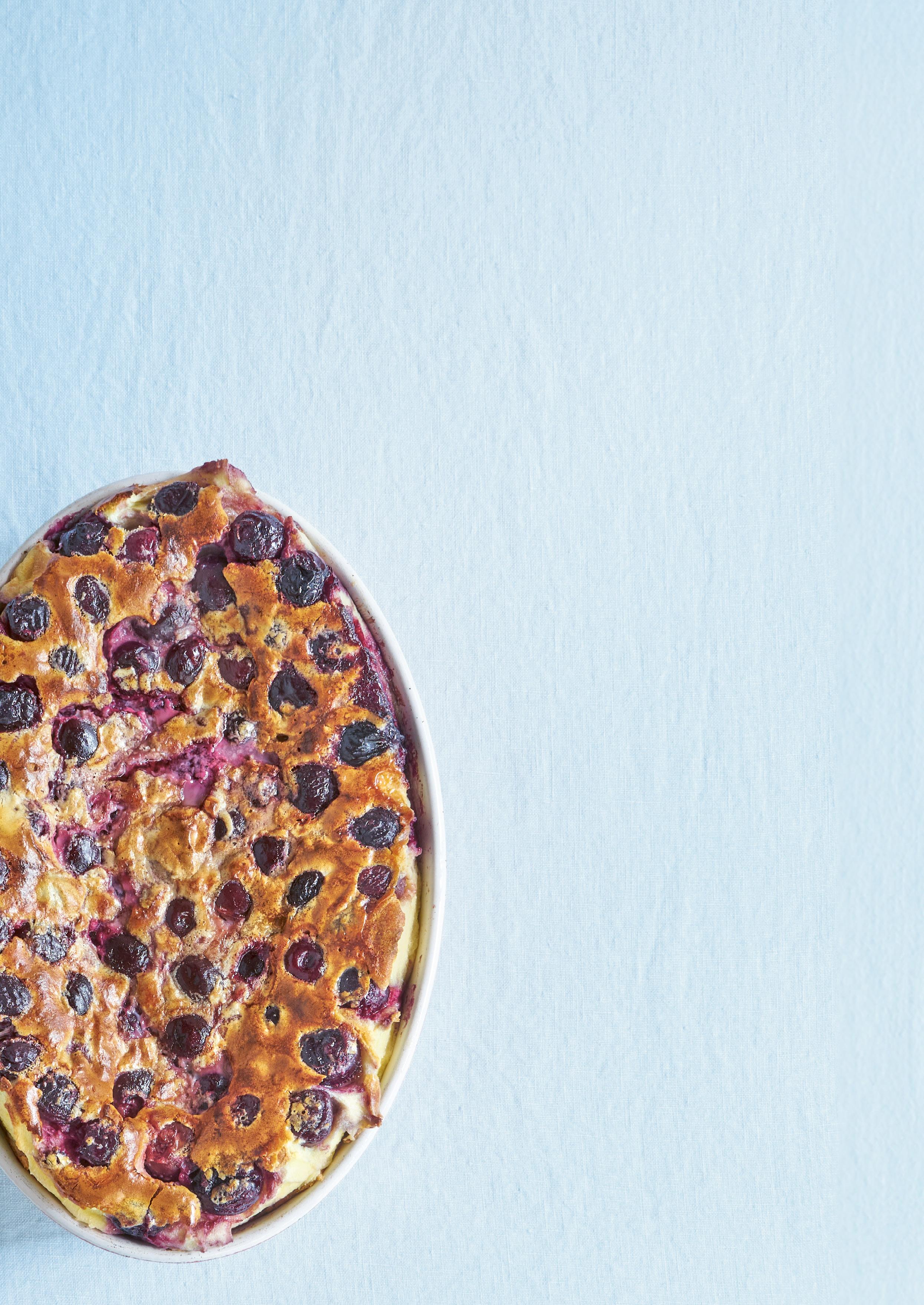
Clafoutis is a pudding from the region of Limousin, in south-central France, but variants exist in neighbouring regions. There is a debate in France on whether to pit (stone) the fruit or not: some say it’s best not to because the stones yield a lot of extra taste and the cherry juices won’t be lost in the pudding; but it’s easier to eat the dish without. Clafoutis batter is a little like a pancake batter, which is poured over fruit and then baked. Cherries are the most classic flavour, but other fruits work well too, such as mirabelle prunes, raspberries, or pan-fried slices of apples.
Preparation time: 30 minutes
Cooking time: 35 minutes
Serves: 6
• Butter, for greasing
• Scant 1 cup (100g) all-purpose (plain) flour
• 6 eggs
• 1 cup (250ml) milk
• 3 cups (750g) black cherries, pitted (stoned)
• 1 tablespoon kirsch
• 3½ tablespoons (40g) superfine (caster) sugar
• Salt Method
1. Preheat the oven to 200°C/Gas Mark 6 and butter an ovenproof dish.
2. Mix the flour with the eggs and a pinch of salt in a bowl. Add a little of the milk and beat into the batter until light and smooth. Add the remaining milk, a little at a time, beating between additions until the batter falls like a ribbon from the spoon, like crêpe batter.
3. Stir the cherries and kirsch into the batter. Pour into the prepared dish and bake for 35 minutes until set and top is golden brown.
4. Remove from the oven, then sprinkle with the sugar.
5. Serve warm or cold.
Pâté en croute — or pâté-croûte in Lyon and the Champagne region — is meat and stuffing encased in pie dough (shortcrust pastry). It’s a glorious addition to a buffet spread or picnic. A generous slice can also be served at lunch with a green salad. The dish probably originates from medieval times, when a thennonedible crust simply helped cook and preserve the meat. It was later that scrumptious pastry started to be eaten, blending the traditional arts of charcuterie and pâtisserie. Cooks often take pride in pinching the edges in pretty patterns and shaping decorations with the cuttings.
Preparation time: 1.5 hours, plus resting time
Cooking time: 1.5 hours
Serves: 6
Ingredients
• For the pie dough (shortcrust pastry):
• 4¼ cups (500g) all-purpose (plain) flour, plus extra for dusting
• Scant 1 cup (200g) chilled butter, diced, plus extra for greasing
• 2 teaspoons salt
• About 2/3 cup (150ml) ice-cold water, to bind the dough
For the filling
• 200g thin bacon slices (rashers)
• 1½ –2½ cups (400g) stuffing of your choice
• 300g ham, sliced
• 300 veal, cut into strips
• 1 egg yolk, whisked, to glaze
• Salt and pepper
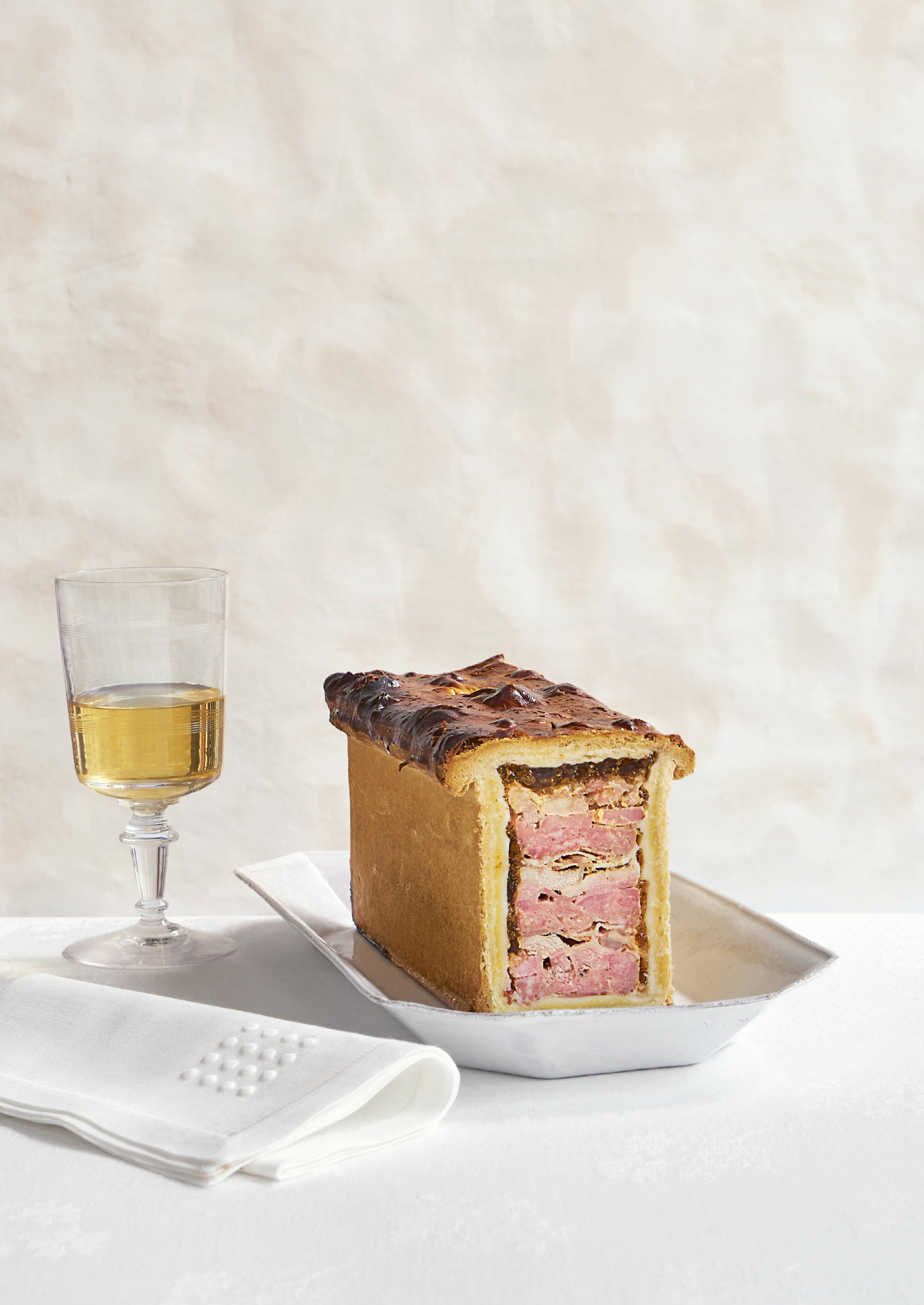
Method
1. Preheat the oven to 200°C/Gas Mark 6.
2. First, make the pie dough (shortcrust pastry): Place the flour in a bowl, make a well in the centre, and add the butter and salt. Rub together with your fingers until the mixture has a breadcrumb-like texture. Add enough ice-cold water to just bring the dough together, mixing with your hands. Turn out onto a floured counter and knead well for 5 minutes until the dough is smooth. Form the dough into a ball shape, then place in a clean bowl. Cover and allow it to rest for 12 hours in the refrigerator.
3. Grease a 12 x 3½ x 3½ -inch (32 x 8.5 x 8.5cm) pâté dish or terrine with butter. Roll out two-thirds of the dough and use it to line the dish, leaving ¾ inch (2cm) of dough above the rim.
4. Assemble the filling: Place a layer of bacon slices (rashers) at the bottom, then a layer of stuffing, a little of the ham, then a layer of the veal, seasoning each layer well with pepper. Continue making layers until you have used all the ingredients.
5. Roll out the remaining dough to create a lid slightly larger than the dish, and use to cover the filling. Pinch the edges of the dough together to seal. Brush with the whisked egg yolk to glaze, and make a hole in the centre of the lid, keep it open during cooking with a small funnel made of cardboard. Bake in the oven for 1½ hours, or until deep golden brown.
6. Remove from the oven and cool completely before serving.
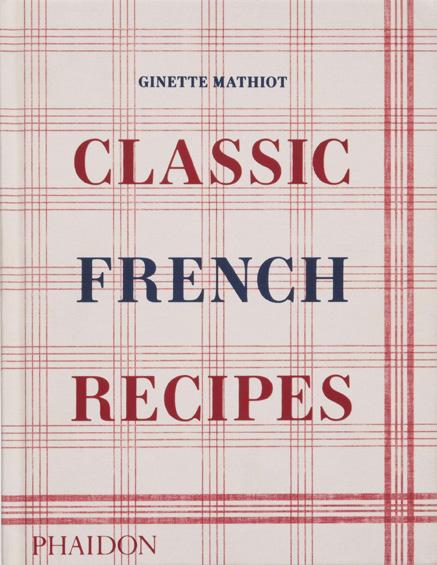






GASPARD DE RANCOURT spent years working in Paris before he made the move to Sydney a few months back. The chef came up in the kitchens of Les Résistants — La Table (formerly L’Avant-Poste) and Elmer Paris, where he learned from Michelin-star chefs lauded for their commitment to upping the stakes with regards to sustainability and gastronomic excellence. de Rancourt is part of a new wave of culinary talents doing things their way — and we’re fortunate enough to have him on our shores.
The chef speaks to Hospitality about his time working in Paris, the differences in seasonality and produce, and how he’s plating up dishes you may have never come across before.
There were three key factors that went into Gaspard de Rancourt’s decision to leave Paris behind for Sydney. The first? The opportunity to improve his English. The second and third are culinary-related — for the most part. “I spent too much time working in Paris,” he says. “I think Sydney gastronomy is interesting because chefs make whatever they want here, which is similar to how it is in Paris. It’s also an interesting place because of all the produce and proximity to Asia — we don’t have the same produce in Europe.”
While the chef was keen on a location change, there’s no skipping over the invaluable learnings he gained working at L’Avant-Poste, which has

relaunched as Les Résistants — La Table. The restaurant has a nine-point checklist that all products must meet covering animal welfare and pricing to traditional farming methods and sustainability. While the list is general, the restaurant has also published defined criteria on every product the kitchen uses and its environmental impacts.
There’s no doubt working in a kitchen with such parameters is limiting, but the restrictions inspire chefs to think far, far outside the box. “We were trained to work with full animal carcasses and the seasons,” says de Rancourt, who joined as a sous chef before being promoted to head chef. “We would take produce from farmers versus ordering it, and the objective was always ethicality. We couldn’t use any products that were transformed by the industry, so many things were impossible. I worked with two chefs there who were very different — one was creative and the other was from a two Michelin star restaurant and more gastronomic.”
After two years at the restaurant, de Rancourt decided to complete a one-month internship at Bar Brutal in Barcelona before making his way to Sydney. The bar is known for its natural wine program and seasonal food menu that showcases regional produce from marinated fish to cheeses and oysters. The offering is very much driven by produce availability, with de Rancourt plating up
“It’s about creating different layers … with the precise tastes hitting your mouth at different moments.” – Gaspard de Rancourt

a unique dish each night. “It was really different from what I used to do, but very cool,” he says.
The chef initially hoped to work with Josh Niland at Saint Peter or Fish Butchery in Sydney, but a chance opportunity to join Café Freda’s presented itself instead and de Rancourt landed the head chef position. His first menu went live in May, with the offering marking a new chapter for the Taylor Square restaurant. Snagging a chef of de Rancourt’s calibre was a huge get for the venue, with Owner David Abraham keen to offer guests a unique dining experience.
“Whilst Café Freda’s is very much informed by Sydney, its culture, and its location, it is at its roots a European-style wine bar,” says Abraham.
“Finding a chef of Gaspard’s standard is rare given the volume of restaurants and bars in Sydney. The most exciting thing about having Gaspard is we get to experience a little bit of the skill, talent, and creativity you would rarely find outside of Parisian bistros and wine bars.”
The chef’s debut menu is split into snacks (all day) and share (until 10pm), and largely focuses on vegetables as well as seafood, with no set rules besides creating dishes guests can share — and taking the kitchen’s lack


of extraction into consideration, “which is a challenge”, he says. “For me, it’s a good definition of a bistro. I am really excited to try things and I want to work with whole fish, but it would be too much to order a 50kg tuna compared to what we are selling, so I will have to come up with some new ideas.”
A dish of roasted heirloom carrots with carrot and brown butter purée, fried chickpeas, tahini, and chilli oil is an example of de Rancourt’s produce-first ethos along with a plate of burnt leeks teamed with mustard seed pickles, hazelnuts, fetta, and buttermilk. “The carrot and leek dishes are interesting because I try to use every part of the produce and minimise waste,” he says. “It’s about creating different layers like acidity and smoke, with the precise tastes hitting your mouth at different moments.”
Smaller bites are available throughout the day and cover Appellation oysters with lemongrass dressing; chickpea panisse with beetroot ketchup; sourdough toast with onion fondue, red cheddar, Serrano ham, and French mustard as well as a terrine pot au feu with baby gem and wasabi mayo. On the seafood front, de Rancourt has opted to serve tuna crudo style and accompany it with a red cabbage slaw and anchoiade, a French anchovy sauce.
The chef has been in the kitchen for a few months now, and so far, the feedback from guests has been positive. “What I am offering today is different to before and I am doing things my way,” says de Rancourt. “My cuisine is the result of my experience. I think finding your own style is the work of life.” ■
The industry’s leading event for the foodservice sector returns. Here’s what you can’t miss.
Fine Food Australia is back for another year — its 40th to be exact. Australia’s largest B2B foodservice event will be held at Melbourne’s Convention and Exhibition Centre from 2–5 September and showcase innovations across the hospitality category from bakery to beverages, produce, equipment, technology, manufacturing, and everything in between.
This year’s show is set to be bigger than ever, which coincides with Fine Food’s milestone anniversary. “As we celebrate Fine Food Australia’s 40th year, we reflect on how it has evolved, embracing innovation, trends, and challenges of the culinary industry here in Australia,” says David Longman from
Diversified Communications. “From humble beginnings to a large-scale international trade event … Fine Food Australia is testament to the enduring spirit of culinary excellence and the platform’s role in shaping the future of food in Australia.”
The showroom floor will be filled with more than 425 exhibitors, with the event also hosting presentations and informative sessions on industry topics. Talking Tech is a new addition to the program which will feature technological advancements and advice for hospitality operators to keep ahead of the game.
Talking Trends returns for another year as well as The Source Kitchen with Tawnya Bahr and Lucy Allon, who will
spotlight chefs, farmers, and produce experts across various workshops and demos.
The final round of the Nestle Golden Chef’s Hat competition will take place during the show. Up-and-coming chefs are set to cook live in front of a judging panel. The ACF Culinary Challenge will also run during Fine Food, with chefs, trainees, and apprentices competing on the show floor in front of a live audience and a panel of expert judges. A 40th birthday event for Fine Food Australia is set to be an evening to remember, with attendees invited to purchase tickets and celebrate with peers.
Registration for Fine Food Australia is only open to foodservice professionals, visit finefoodaustralia.com.au

Check out these exhibitors on the show floor.


Experience the best of Wombat Valley products at Fine Food Australia. The stand will be a hub of delicious discoveries and culinary delights, with visitors invited to sample the brand’s latest and greatest creations. Each product is crafted with the finest ingredients, reflecting Wombat Valley’s commitment to quality and taste.
Meet the dedicated team and learn about the passion and expertise that goes into every Wombat Valley product. The brand will also showcase its sustainable and ethical sourcing practices, which ensure every bite tastes great and supports the environment.
Don’t miss out on exclusive tradeshow discounts and special offers only available at the Wombat Foods stand. There will be gluten-free and vegan options available, ensuring there’s something for everyone. Plus, enter the raffle for a chance to win a Wombat Valley hamper filled with delicious products. wombatfoodgroup.com.au
Visit Meris food equipment at stand G14 and discover the latest innovative commercial cooking equipment and food display solutions.
The popular Perfect Fry ventless deep fryer will be on show, which requires no hood or canopy and cooks 1kg of chips in less than three minutes. Perfect Fry makes it possible to serve food around the clock, with no chef, skilled staff, or kitchen required.
Want to take advantage of the growing food-to-go category? Check out the award-winning Flexeserve Zone, a hot food display like no other on the market. The display uses unique patented air flow technology to preserve food quality and increase shelf life.
For more than 25 years, Meris has empowered operators of all sizes to develop successful and sustainable food offers supported by global leading equipment brands, reliable service network, and consultation services. meris.com.au
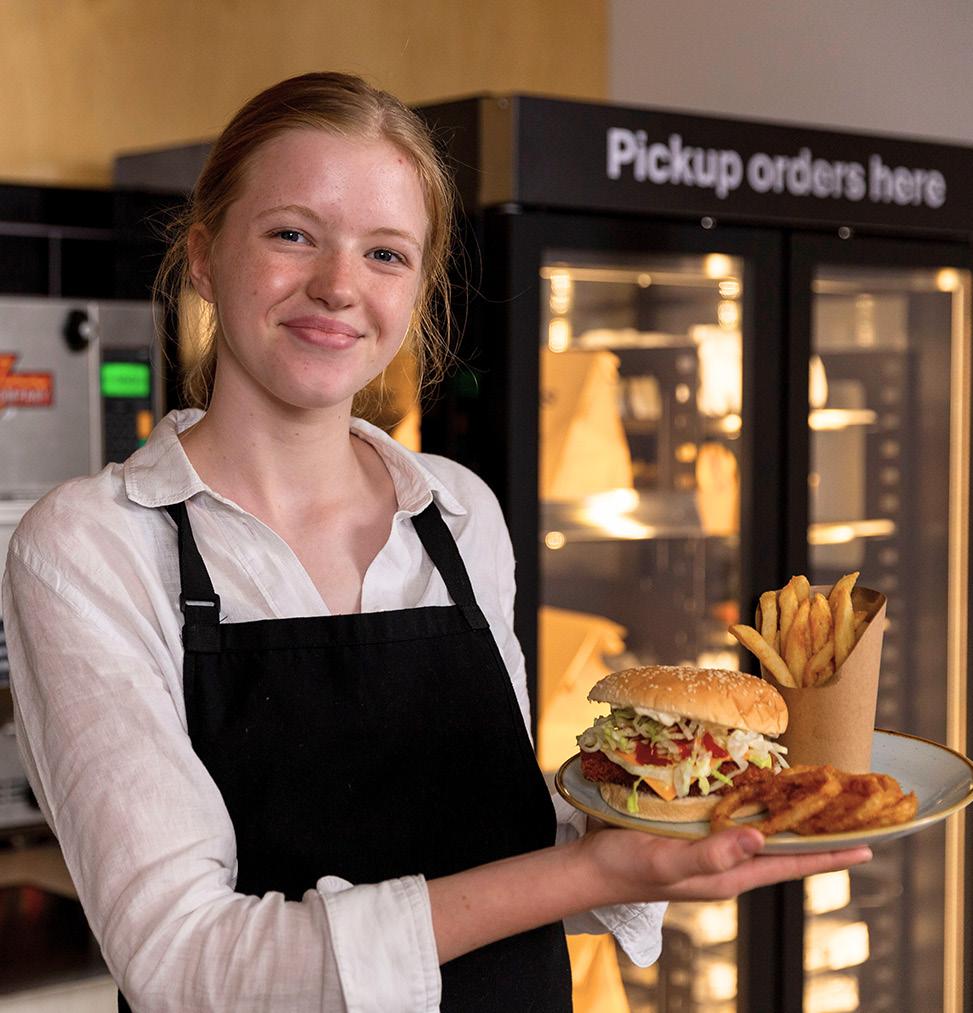

Come and see the friendly EOI Bakery/Peerless Foods team at E40, a brand-new stand opposite Bakery World. Experienced bakers will be showcasing the existing range of quality margarines and shortenings as well as new products such as puff pastry rolls, pie bottom rolls, baked and unbaked tarts, shells, and croissants. Over four days, there will be samples of delicious pastry goods including new pie and sausage roll recipes, filled sweet tarts, filled croissants, and fruit danishes. Bakers will also be there to help answer any technical or product questions visitors may have. peerlessfoods.com.au
Since its inception in 2016, RDM Pizza has been building on its Italian–Australian heritage to become a market leader in authentic pizza products. From the award-winning dough to the highest-quality pizza ovens, RDM Pizza has developed specialty products to satisfy gaps in the market.
RDM Pizza is proud of the things that set them apart, from the way the team lovingly manufactures products in Sydney to the carefully selected premium Aussie ingredients and the promise of no additives or preservatives in the dough.
RDM Pizza understands the current labour shortages in the hospitality industry and provides solutions to keep your pizza section humming along through products, free training to new and existing staff, and the optimisation of your pizza section to maximise output and quality. RDM Pizza is the collective of creative minds and big hearts. Find RDM Pizza at stand HG32. rdmpizza.com.au



Purezza Premium Water offers high-quality, sustainable waterdispensing solutions and reusable bottles, enabling hospitality venues to replace costly single-use water bottles and eliminate transport and delivery expenses. Purezza water systems allow you to dispense unlimited sparkling and still water on-site, with sizes available to suit any space and output requirement. Visit the Purezza team at stand W38 at Fine Food Australia and taste refreshing, chilled still and sparkling water. purezza.com.au
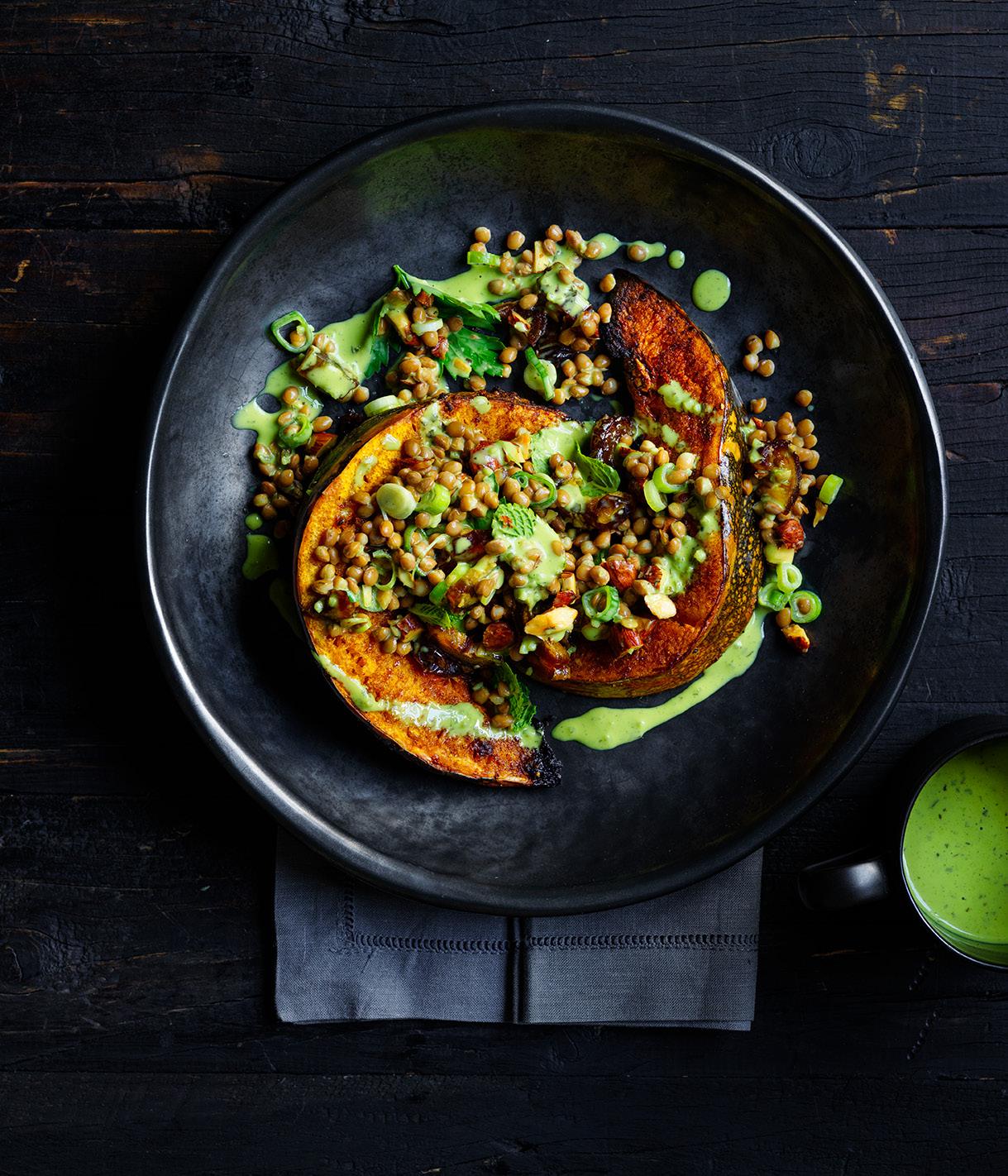

Birch & Waite is a locally owned business that was founded more than 30 years ago with a vision to provide superior-quality, freshchilled products for the professional chef. Birch & Waite’s endless pursuit for culinary perfection and innovation continues to set the benchmark in Australia for mayonnaises, dressings, relishes, sauces, and desserts. -All products are made using chef-quality, authentic recipes and are fresh-chilled, without the need for artificial flavours, colours, and preservatives. They are the perfect solution for kitchens that take pride in quality and can assist with labour shortages and consistency challenges.
Find the Birch & Waite team at stand HD21 and try the whole egg mayonnaise and hollandaise voted number one by Australian chefs at the 2024 Chefs Decision Awards. Famous chef-quality flavours will also be available to taste across an exciting menu designed and cooked by a team of chefs. birchandwaite.com.au

Looking to print your food and drink packaging in-house and on demand? Discover printing solutions from Trimatt Systems to profit more. Visit the 2022 APPMA Australian Machinery Manufacturer of the Year Trimatt Systems at stand HJ37. The team will showcase Australian-designed and manufactured print automation solutions for the first time at Fine Food Australia, providing visitors with a unique opportunity to see profit-boosting machinery up close.
The team will host demonstrations on the ColourStar AQ V, a versatile digital colour printer that handles a wide range of sustainable packaging products with auto feeding that produces vibrant prints at speeds up to 27m per minute. Visitors can also see the CupPro 600 in action, which creates custom prints and auto stacks up to x1,500 paper cups per hour, allowing owners to economically customise cups with a simple x2 spot colour logo, QR code, or graphic. Reduce operational costs, labour costs, production errors, and open new markets with Trimatt. trimatt.com


https://mytico.franke.coffee/ch/en/home.html
Artisan Food Company Australia is a dynamic and leading food contract manufacturer. World-class manufacturing capabilities and a Europeaninspired product portfolio allows the brand to create food solutions locally and globally for retail, industrial, and foodservice customers. The brand’s range of premium arancini, snack bites, and roti products are the perfect additions to menus that require quick cooking and flavourful small portions in individual or bulk packaging. The range of stocks, sauces, and soups are made from whole ingredients that provide consistent quality and flavours with rich textures, resulting in a high standard of finished products. There’s also a range of meal bases and prepared single-serve meals, which deliver nutritionally balanced options.
Artisan Food Company Australia’s contract manufacturing team works with you from start to finish to develop premium food solutions to turn your idea into a tangible, sellable product. The brand uses expertise, capabilities, and quality ingredients to create products your customers will love. artisanfood.com.au
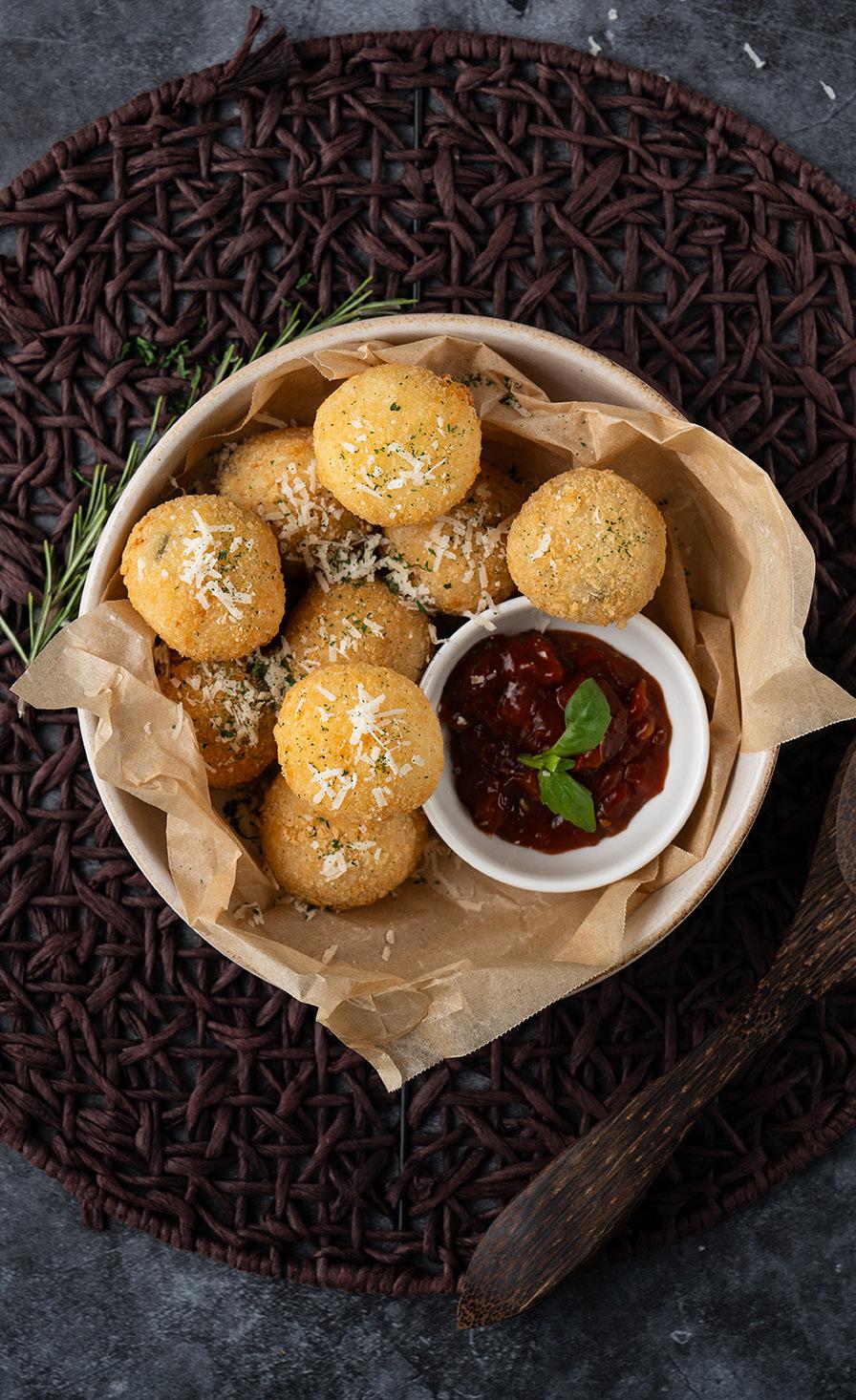

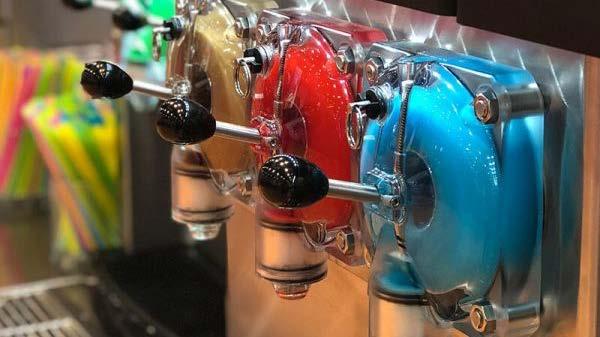
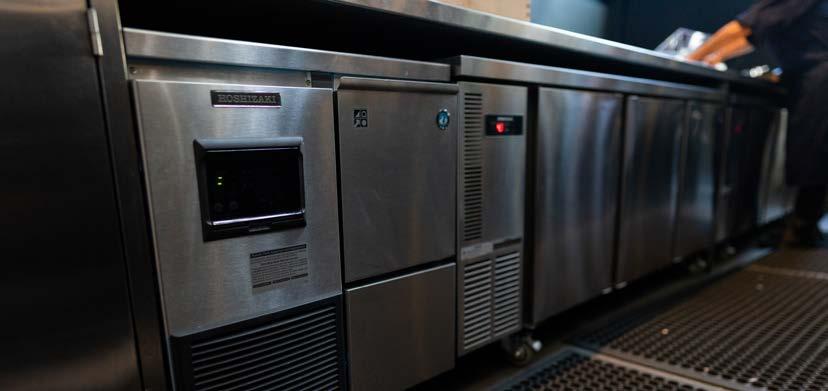
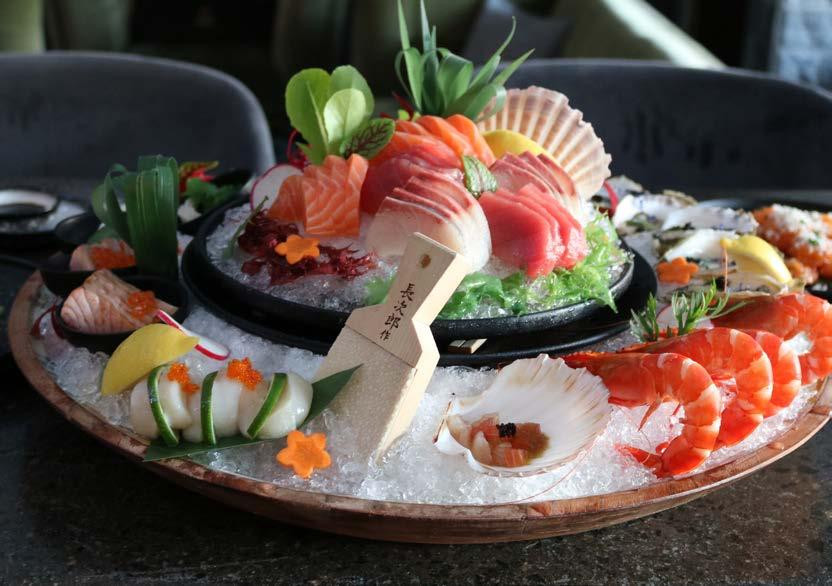
Experience innovation and excellence with Lancer Worldwide and Hoshizaki at Fine Food Australia 2024. Discover a dynamic showcase featuring state-of-the-art beer fonts, frozen beverage dispensers, and soft drink dispensers from Lancer Worldwide. Hoshizaki’s renowned ice machines, commercial fridges, freezers, water dispensers, and sushi cabinets all complement these innovations.
Visit the stand at Fine Food Australia 2024 and prepare to question everything you thought you knew about frozen beverages. Let the team challenge and redefine your expectations with Lancer Worldwide’s innovative offerings and discover products with unparalleled quality and performance. Experience firsthand how Lancer Worldwide and Hoshizaki are setting new standards in foodservice equipment.
lancerworldwide.com
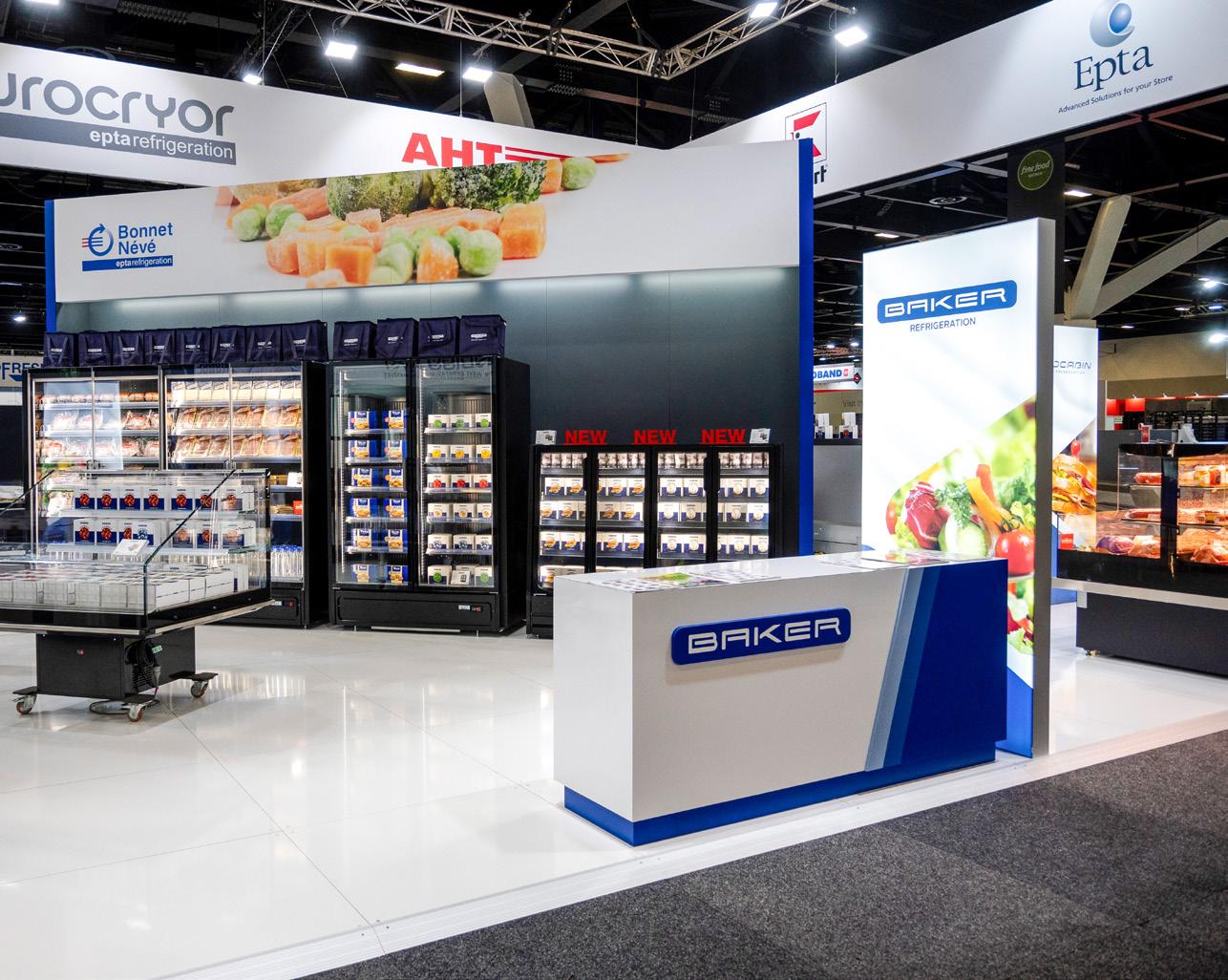

Teams from across Australia, including the dedicated foodservice team from South Australia, will be at Fine Food Australia to showcase a selection of amazing products AJ Baker supplies, installs, maintains, and services from refrigeration brands including Manitowoc Ice, Bonnet Névé, Criocabin, and All Chilled.
Whether you’re exploring new refrigeration solutions for your business, learning more about high-quality ice-making machines, or are simply curious, AJ Baker’s team of experts will be on hand to assist you.
Don’t miss the opportunity to network and discuss your specific needs with the team at stand M2. Keep an eye on AJ Baker’s social and web pages for announcements. ajbaker.com.au


Best Juices Co is a trusted locally owned and operated Victorian company that has supplied quality juices since 2013. The business is built on a foundation of supplying exceptional, consistent, and quality products to a wide range of retail and wholesale customers.
The company only accepts the highest-quality raw ingredients to make its product range, which includes oils, olives, and organic juices. Customers can be confident in the knowledge they are selecting superior product options.
Flowerdale Farm is proud to be an approved wholesaler and values the strong partnership built over many years with a fellow family business. The businesses share the same values of quality, service, and integrity. bestjuices.com.au; flowerdalefarm.com.au

Discover the forefront of sustainable packaging solutions with BioPak and stay ahead of the curve. As single-use plastics continue to be banned across Australia, BioPak is proud to introduce a new range of compliant packaging alternatives crafted from certified compostable and rapidly renewable materials. The innovative products not only support environmental sustainability but are also cost-effective.
BioPak is thrilled to announce the historic acquisition of Australian-based reusable cup company Huskee. The partnership will accelerate and strengthen BioPak and Huskee’s shared vision of a circular economy, providing even more innovative and sustainable solutions.
Visit the team at stand HJ26 to explore the latest cutting-edge products and take advantage of a complimentary packaging assessment tailored to your specific needs. The personalised service is designed to help you achieve your sustainability goals. Join BioPak in making a positive impact by choosing responsible solutions for a greener future. biopak.com
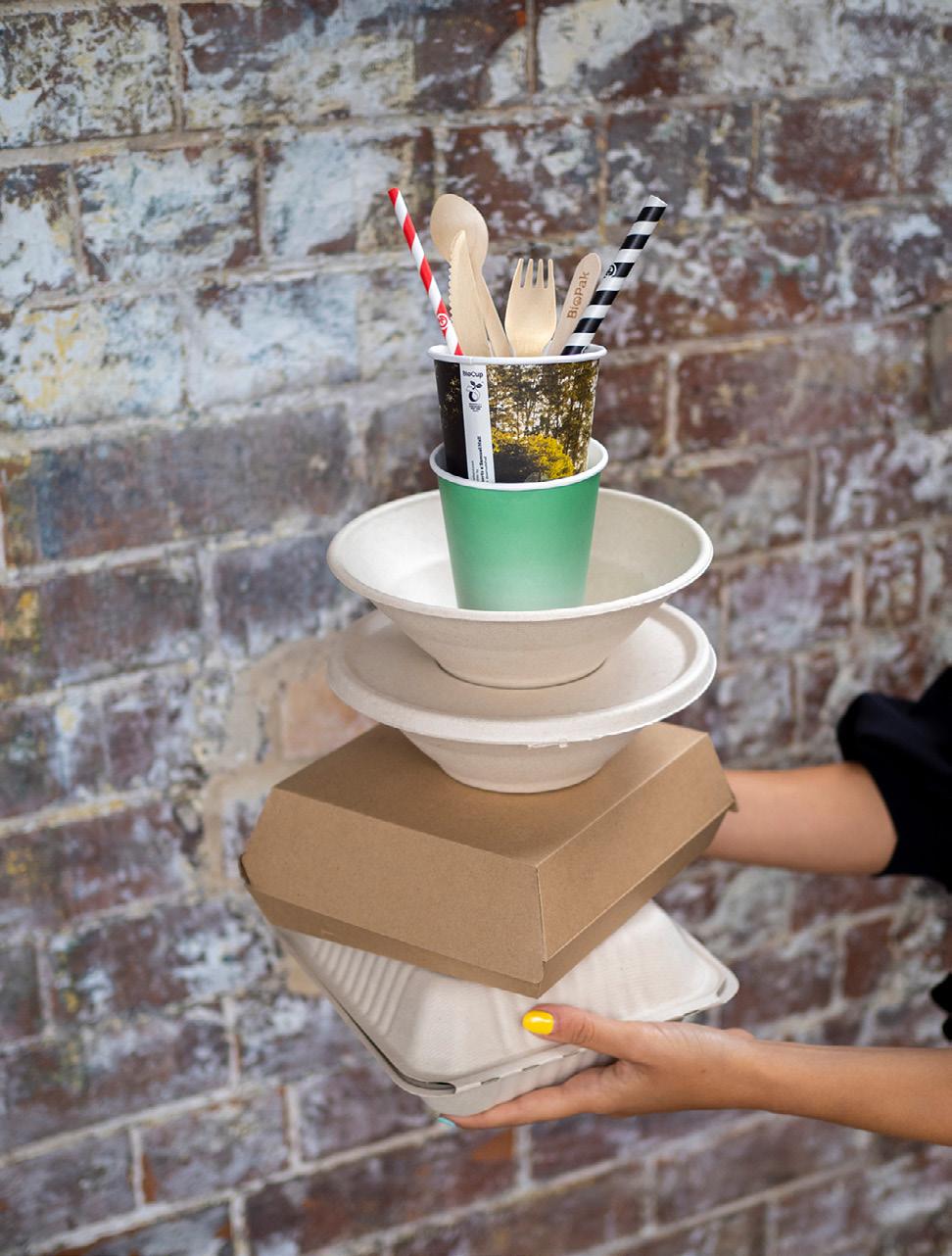


Zeller supports tens of thousands of restaurants, bars, clubs, pubs, cafés, and quick-service restaurants with everything from affordable EFTPOS to online invoicing and transaction accounts to expense management and more. Proudly Australian owned and operated, Zeller combines every tool your hospitality business needs to accept payments and manage your finances and get paid faster into one simple digital solution with no monthly subscription fees or lock-in contracts. myzeller.com

Drinking coffee has become a daily ritual many people enjoy. In recent decades, the trend has increased along with customers’ expectations. Barista-quality espresso has even become one of the prerequisites for staying in a hotel or visiting a new restaurant. People search for an extraordinary coffee experience wherever they go.
Franke Coffee Systems always keeps up with the latest trends and responds with innovative solutions that go beyond industry standards. This year, the company raised the bar even higher by introducing a brand-new product category — BeyondTraditional. Mytico is the name of the first product line in the category. Aesthetically pleasing, easy to use, and hard to ignore, Mytico coffee machines combine impeccable Italian design on the outside with excellent Swiss quality on the inside. The stylish yet classic appearance makes them an ideal fit for any business ambiance. There are six colours available, which are sure to complement your premises and deliver an exceptional coffee experience. The reduced height of the machines also allow baristas to focus on chatting with customers while easily preparing flavourful drinks. Consistent in-cup quality will make your guests come back for more. mytico.franke.coffee
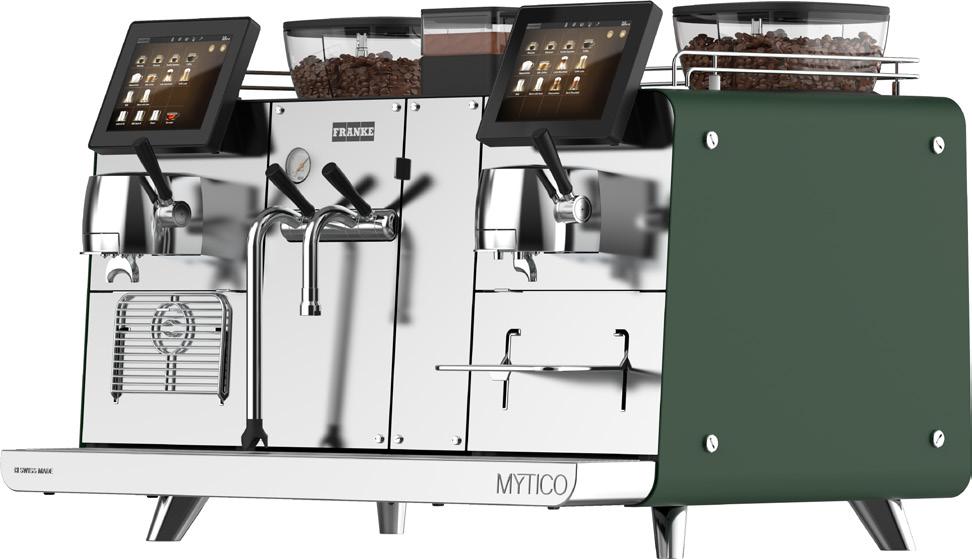
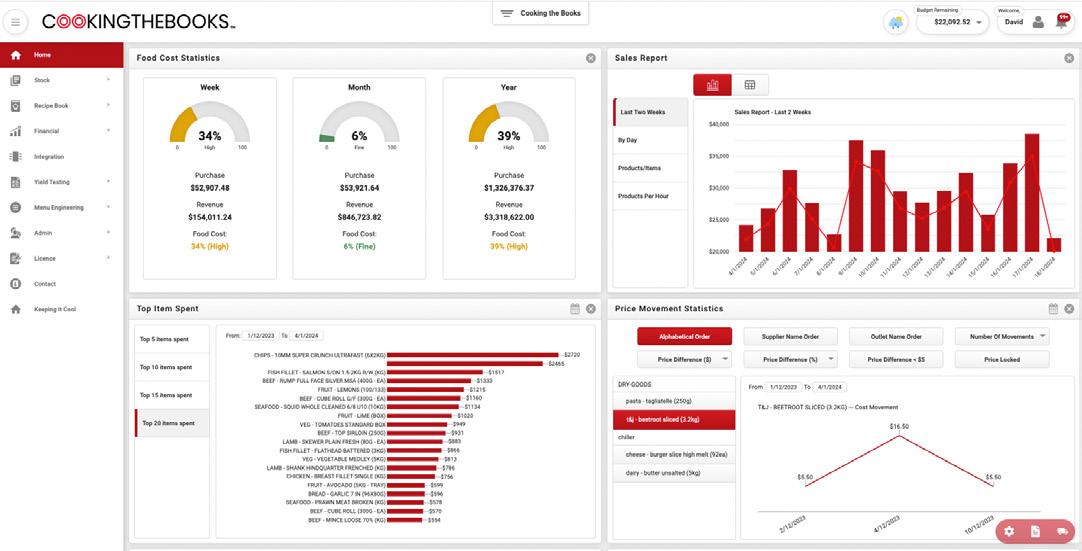
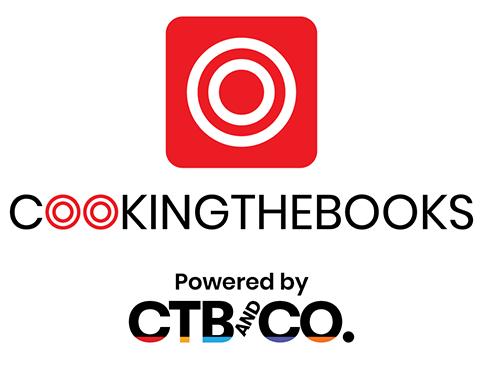
Cooking the Books (CTB) provides transparency and control over food costs. CTB and Co’s cloud-based kitchen platform streamlines food cost and inventory management with data-driven solutions that modernise kitchen processes and lower operating costs.
Streamline the way your kitchen places orders, manages stock, and approves invoices. Oversee your COGS in real time using intuitive recipe cards designed to manage costs and drive consistency across the business. Review performance using powerful food-focused reports and eliminate manual invoice processing using the in-built Invoice Ripper engine that extracts your invoice data at line-item level.
To learn more about Cooking the Books, visit the team at stand T8 for an in-person demo or sign up for a free trial at ctbandco.com
Celebrating 40 years in 2024join us in bringing together chefs, producers, suppliers and food trade professionals from around the world!
Fast-track your recipe for commercial success with the newest products and practical insights at the ultimate B2B food event.




Bread has evolved from its pre-meal status.
MOST MENUS LIST a form of bread to get things started. It’s a staple carb in a number of cuisines and a fuss-free way for guests to begin a meal. But bread has evolved far beyond a handful of torn-up pieces in a metal basket. Chefs are highly attuned to the role the unofficial starter plays in a guest’s dining experience — it’s the first bite of what’s to come, a vessel for mopping up sauces later on, and a means for chefs to flex their baking skills.
To find out more about the evolution of bread on the menu, Hospitality speaks with Eric Shane Ortolani from Sydney’s Itō, Shane Wilson from Adelaide’s Anchovy Bandit, and Charley Snadden-Wilson from Melbourne’s Clover Wine.
Japanese–Italian eatery Itō has become known for its shio kombu bread masterminded by Head Chef Erik Shane Ortolani. The chef notes bread’s natural role as a starter on the menu, but also believes it is an introduction to the culinary direction of the overall venue. “Itō serves delicious and unassuming dishes with a fusion twist and our bread reflects that: a subtle European kick to Asian techniques,” he says.
Ortolani first experimented with Japanese-style milk bread when developing the menu, but it didn’t pan out. “I then decided to blend a rich brioche bun recipe with Chinese tangzhong [water roux] that would lock the moisture in and give a consistent and fluffy result,” says the chef. “I was really impressed with this version, especially because it’s straightforward and was better than other complicated recipes by miles.”
The process for the shio kombu bread starts a day prior when the team makes the dough. “We make a roux with milk and shio kombu to maximise the flavour,” says Ortolani. Yeast is then dissolved into warm milk before all the ingredients are combined in a stand mixer. The mixture is then proofed, knocked back, and shaped into 65g balls that rest until the following day. “We proof them in a warm corner of the kitchen and bake first thing every morning. We bake them until golden for around 25 minutes at 160 degrees Celsius.” The fluffy, brioche-style bread is served with CopperTree Farm’s cultured butter, which was selected for its complementary milky profile.
Anchovy Bandit offers guests two bread options on its Italianinspired menu: sourdough focaccia served with cultured butter and wood-fired flatbread (a garlic iteration is also an option). An extended program of bread is also served at sister venue Bottega Bandito. “Over both sites we make focaccia, loaves, ciabatta, and a fruit loaf,” says Executive Chef Shane Wilson. “[It’s] all made from the same sourdough base recipe and starter. We also serve woodfired bread made [from] pizza dough (not sourdough), which is cooked to order in the pizza oven.”
Sourdough is made in large quantities and distributed across Anchovy Bandit and Bottega Bandito. “It starts in a large dough machine, which gets the gluten development started,” says Wilson. “The dough is then bulk fermented in large tubs and we give it a series of folds every half hour over about four hours. It is then shaped, and we let it proof slowly in the fridge overnight so it develops more of a sour flavour.” The following day, the

“There’s a distorted idea of how easy bread is to make … [but] it is time-consuming. When you do make it, you really need to celebrate it.”
– Charley Snadden-Wilson


bread is baked in the wood-fired oven using the leftover heat from dinner service the night before.
Wilson believes bread plays a vital function in providing familiarity on a menu. “I think bread gives people a sense of comfort and most guests look for it on a menu,” he says. The role of bread goes beyond a pre-dinner snack and can be dialled up with accompaniments or used as an addition to other dishes on the menu. “I love a bread offering that is interactive such as serving it with condiments or taking it to the table at a point in the dining experience where it really complements the other dishes.”

Bread
The chef suggests the bread be enjoyed with burrata, cured meats, and pastas — mopping up the sauce is very much encouraged at Anchovy Bandit. “For me, some snacks and maybe a crudo is where I would start,” he says. “Then you would move into pasta and pizza which is the main bread offering.” There’s also no denying the appeal of simplicity. Chefs produce cultured butter in-house, which takes three days to make. “We make [the butter] from fermenting cream with yoghurt and salt and leave it for about three days. Then we whip it, which gives us butter and buttermilk.”
Over in Melbourne, Clover Wine’s honey bread has collected a strong following since its debut on the wine bar’s bistro-style menu. The dish has evolved to its current form of sourdough seasoned with honey and herbes de Provence. Chef and Owner Charley Snadden-
Wilson believes bread is a must on the table. “Practicality was probably my biggest starting point and a love of having bread on the table — it goes with everything,” he says. “Bread carries its way through a whole meal and will always be essential in my mind.”
Clover Wine’s early bread course was more akin to a French baguette but has now morphed into a lighter, fluffier option. The bread is baked in the venue’s custom-designed oven using residual heat from the previous night’s service.
“We do eight to 10 loads at a time in tins and it’s anywhere from a 14–24-hour ferment and a 30–40 minute bake,” says Snadden-Wilson. “We load them in with a big pan of water to create a bit of steam. By the time the bread cooks, we still have enough temperature to start a fire and be ready for lunch service.”
Bread is often a guest’s first impression of a venue and is something chefs should pay careful attention to. “You can judge so much from [a venue] if someone makes their bread,” says Snadden-Wilson. “It’s also about how they serve it, whether it’s hot, how it’s cut, and how they season the butter.” Bread is ultimately an indication of the overall ethos and approach a kitchen has. “I think it is a wonderful pretence for how much people care as well. There’s a distorted idea of how easy bread is to make … [but] it is time-consuming. When you do make it, you really need to celebrate it.”
Bread’s role has evolved from an expected starter on a menu to an indicator of a venue’s approach to cooking, making it a powerful medium on the menu. ■







JAKE DOWN IS a name synonymous with the Sydney bar scene. The drinks professional has worked in the sector for more than 10 years, completing stints at This Must Be The Place, Re, and now Pleasure Club. Down is no stranger to Diageo World Class, having entered the competition in previous years. But 2024 turned out to be thirdtime lucky for Down, who took home the title of Australia’s Best Bartender and the honour of representing the local bar industry at the global finals in Shanghai.
Down speaks to Hospitality about espresso martinis, participating in the regional finals, and why cocktail competitions are an invaluable experience for bartenders looking to level up.
Six finalists participated in the Australian finals of World Class back in May. Jake Down was joined by James Irvine (Merivale, Sydney); Matt Bodycote (State Buildings, Perth); Rohan Massie (Rude Boy, Hobart); Shirley Yeung (Foxtrot Hospitality Group, Perth); and Tom Opie (The Waratah, Sydney). As you can tell, the competition attracts talent who are at the top of their game, which begs the question — why enter in the first place? The answer is multipronged: “There’s a good pedigree, which you can tell by the people who enter and win which is quite
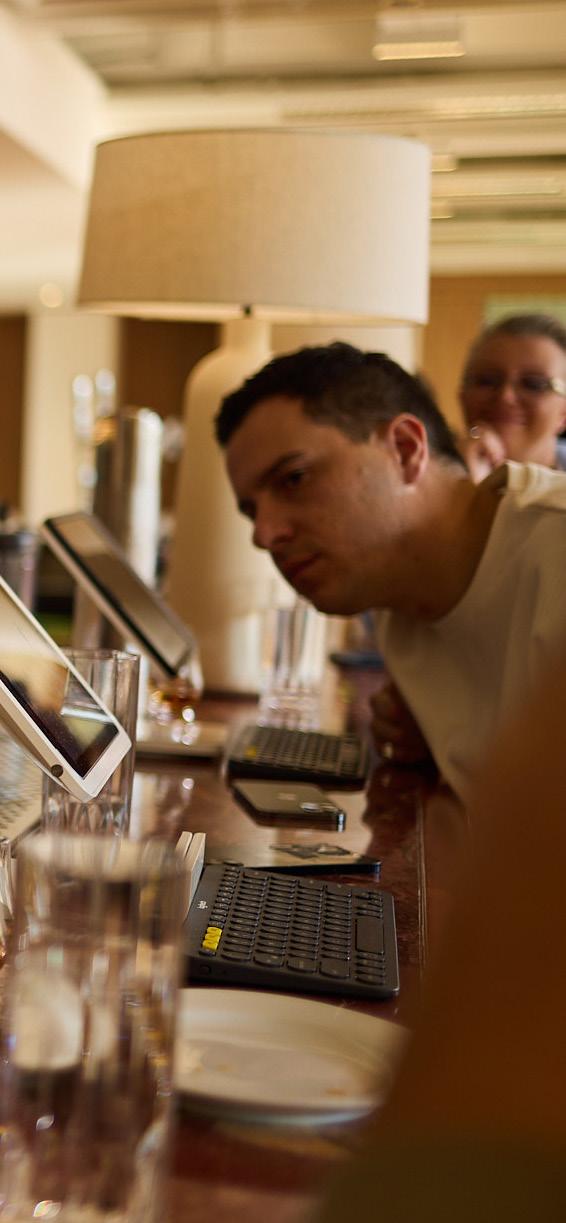


inspiring,” says Down. “It’s also a great way to challenge yourself and try new ideas and techniques you’ve had in the back of your mind. This is the Golden Globes or the World Cup of cocktail competitions — there’s a lot of mentorship and personal growth that comes from it.”
The regional final unfolded over three rounds in Sydney — Malt Maximalism, Paint the Town Ruby, and Check On! This year also marked the introduction of a new category — The Bartender’s Bartender — an award given to the finalist who embodied the spirit of the competition; a ripe addition as World Class celebrates its 15th anniversary.
Finalists were informed about the challenges a few weeks in advance, but not all was revealed. “We had time to come up with ideas and work with elements such as Tanqueray 10, Johnnie Walker, and Ketel One,” says Down. “My partner helped me build out a plan which had colour-coded days that were dedicated to certain things, which really helped me step back and see the whole picture because it can be quite overwhelming — there’s a lot of work and time that goes into it while you’re still doing your full-time job.”
Malt Maximalism proved to be the most difficult part of the final for Down, which required finalists to showcase their creativity and expertise via Johnnie Walker, Talisker, and The Singleton. “The drinks scene has been minimalist for so long, so this was about changing wavelengths and seeing how you could maximise flavour and presentation without being too naff,” he says. “There had to be a reason behind everything you did, so for me, it was the challenge I had to put the most work into.”
Paint the Town Ruby was won by Down and required competitors to use Johnnie Walker Black Ruby, before bartenders moved onto the final part of the competition, the Check On! Challenge. Bartenders were tasked with creating six cocktails which were selected at random from a pool of 21 options. “It was essentially a speed round in a bar situation where a docket was printed that showed you the six drinks you had to make,” says Down. “I made three espresso martinis with Mr Black and Ketel One, and you had to showcase things like the measurements, technique, how much ice, shake time, and straining. I have made a few of them in my bartending career


“This is the Golden Globes or the World Cup of cocktail competitions — there’s a lot of mentorship and personal growth that comes from it.” – Jake Down
and it’s a popular drink in Australia, so it was muscle memory.” The remaining three drinks are not as commonplace in local bars and included a mint julep and a Toronto, with the margarita the final cocktail on the docket. The segment was tested on speed, accuracy, and taste.
Down ultimately emerged victorious on the day, excelling thanks to his creativity, consistency, and attention to detail which secured him a ticket to Shanghai to compete in the global finals in September. There will be representatives from more than 50 countries in attendance, with multiple bar challenges unfolding over five days. There’s much to look forward to — and of course, much to prepare for in the months ahead. But Down has a strong support system around him. “There will be more colour-coded plans, some calendar events, and days dedicated to certain things, but I will go into it with the same approach,” he says. “I have leaned a lot from past winners, friends, and people in the industry. The team at Diageo have also been really supportive. I’m fortunate to have Kate McGraw by my side to help me get ready for the big competition. It feels surreal, but I am honoured to represent Australia.” ■
The taste you can feel good about.






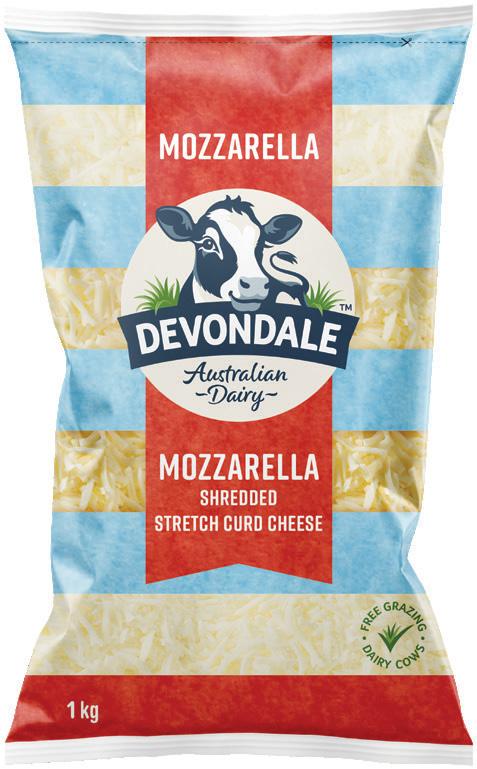
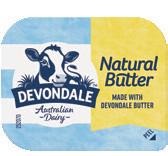
Hostplus is a top-performing super fund that puts members first. That’s why we’re proud to have been named Money magazine’s Best Super Fund 2024. Judged on strong performance, value for money, and an ongoing focus on members, we’re thrilled to receive this recognition.




Best Super Fund 2024 is awarded by Money magazine. Visit moneymag.com.au for awards criteria. Awards and ratings are only one factor to consider when choosing a super fund. Past performance is not a reliable indicator of future performance. General advice only. Before deciding, consider the relevant Hostplus PDS and TMD at hostplus.com.au and your objectives, financial situation and needs, which have not been accounted for. Issued by Host-Plus Pty Limited ABN 79 008 634 704, AFSL 244392 as trustee for the Hostplus Superannuation Fund ABN 68 657 495 890. HP2813
Chef Darren Robertson has teamed up with Australian Pork to teach the next generation of chefs how to work with the protein.

DARREN ROBERTSON IS one of the faces behind Three Blue Ducks. He is a renowned chef, presenter, author, and also a self-confessed pork fan. Robertson has worked with the protein extensively throughout his culinary career and says it’s an ingredient he loves to champion.
Robertson often reaches for pork when it comes to developing new dishes but admits there can “still be a little uncertainty” from some chefs. To help change the narrative, Robertson has joined forces with Australian Pork and TAFE NSW to share the protein’s versatility with the next generation of budding chefs through a new foodservice education program. “I think it’s finally time start inspiring young cooks,” he says.
The chef has been working with Australian Pork to design pork foodservice education modules that will be offered at TAFE NSW as part of the Certificate III in Commercial Cookery course. “I’m going to hopefully inspire cooks to engage with pork by sharing recipes and tips I’ve learned over the years in professional kitchens,” says Robertson. “I want to show the versatility of various pork cuts and just how easy it is to create exciting dishes in cafés, pubs, clubs, and restaurants.”
The education modules contain a combination of practical and written tasks on pork preparation, cuts, and cooking. Students at all TAFE NSW campuses will be able to study the modules across three units: prepare dishes using basic methods of cookery (SITHCCC027); prepare meat dishes (SITHCCC036); and work effectively as a cook (SITHCCC043). The units are designed for first- and second-year cookery students and are around six weeks in duration.
Students will be able to commence studying the units in the coming months, and Robertson is eager to get stuck in. “I’m going to be covering some basic cuts of pork, from tomahawk to ribs, and sharing tips and techniques to cook the cuts and create a complete dish for each,” he says. Robertson cites pork
belly as an example, with the chef using the cut to roll a porchetta and make a pizzetta, too.
For Robertson, the main goal of the modules is to get students across the basics of working with pork so they are comfortable using the protein as much as any other meat option. “I think it’s important to ensure students take away key points that will help them in the future and allow them to add their own flavours and flair to popular pork dishes,” he says.
With the basics in hand, Robertson hopes young cooks will feel inspired to experiment and create their own unique dishes. “I’m excited to see what the young cooks do with the recipes,” he says. “The ultimate compliment is when chefs take something you’ve shown them and develop it into their own.”
It’s a positive addition to the foodservice education sector, with the chef hoping the units will become more commonplace. “The Australian hospitality industry plays a huge role in our economy and food is a big factor in travel and tourism — we need to do everything we can to sustain it,” says Robertson. “Programs like this give young cooks the push they need to embark on an amazing career in hospitality. It’s crucial we get people excited to cooking professionally again. Hospitality is an incredible industry and it’s taught me so much. I’ve travelled the world and made lifelong friendships because of it.” ■
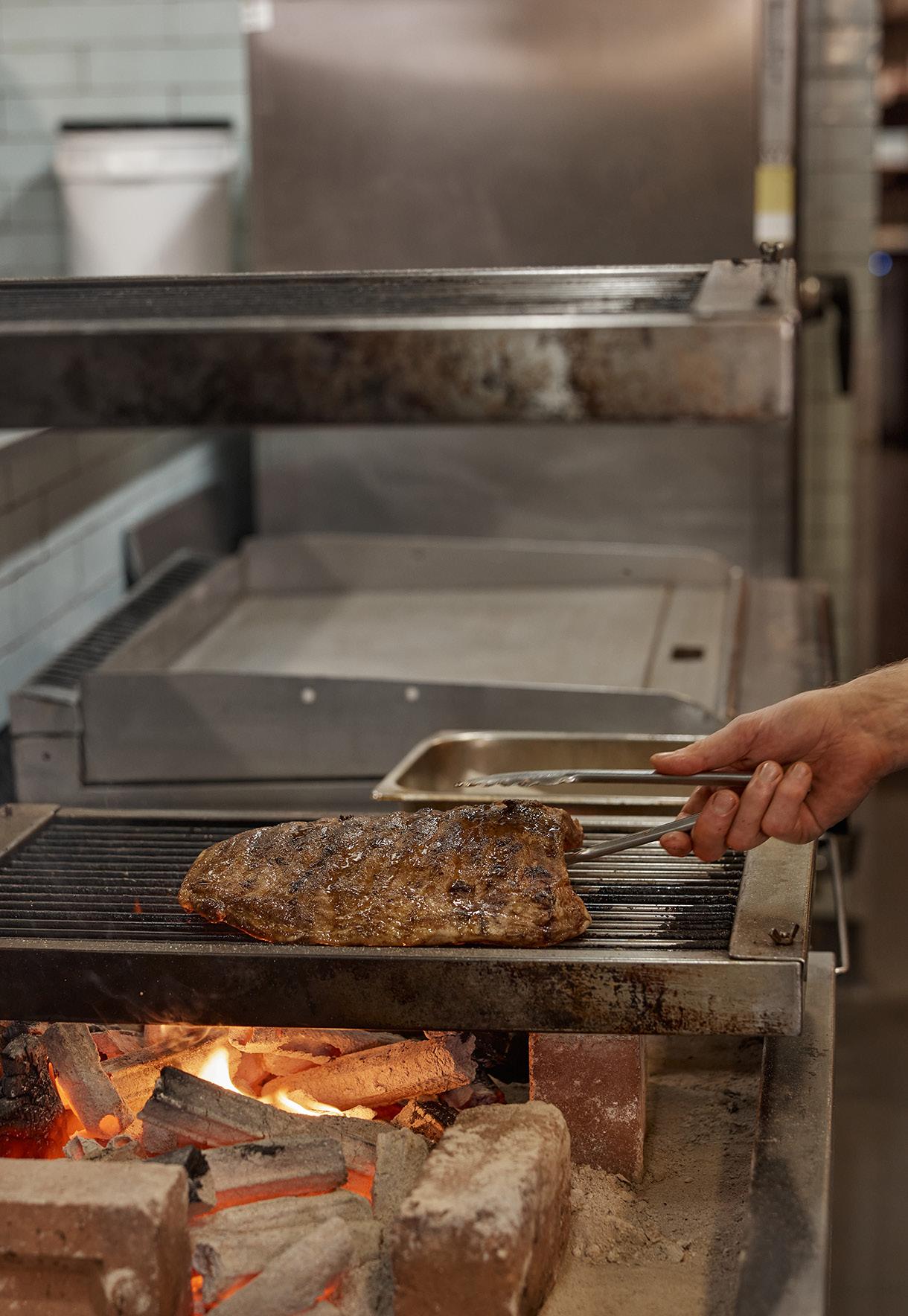
“I want to show the versatility of various pork cuts and how easy it is to create exciting dishes in cafes, pubs, clubs, and restaurants.” – Darren Robertson

The units are part of Certificate III in Commercial Cookery
Students will cover pork cuts, cooking techniques, and dishes
First- and second-year students can study the modules Robertson hopes the modules will show the diversity of pork
The essential servingware is made from mother of pearl.
Used to serve roe since the 19th century
Made from a combination of molluscs including snails, clams, and nautilus
Traditional utensil for serving caviar

Wash with warm water and soap
Mother of pearl does not impart flavour to roe
Smooth, polished surface ensures roe is not damaged
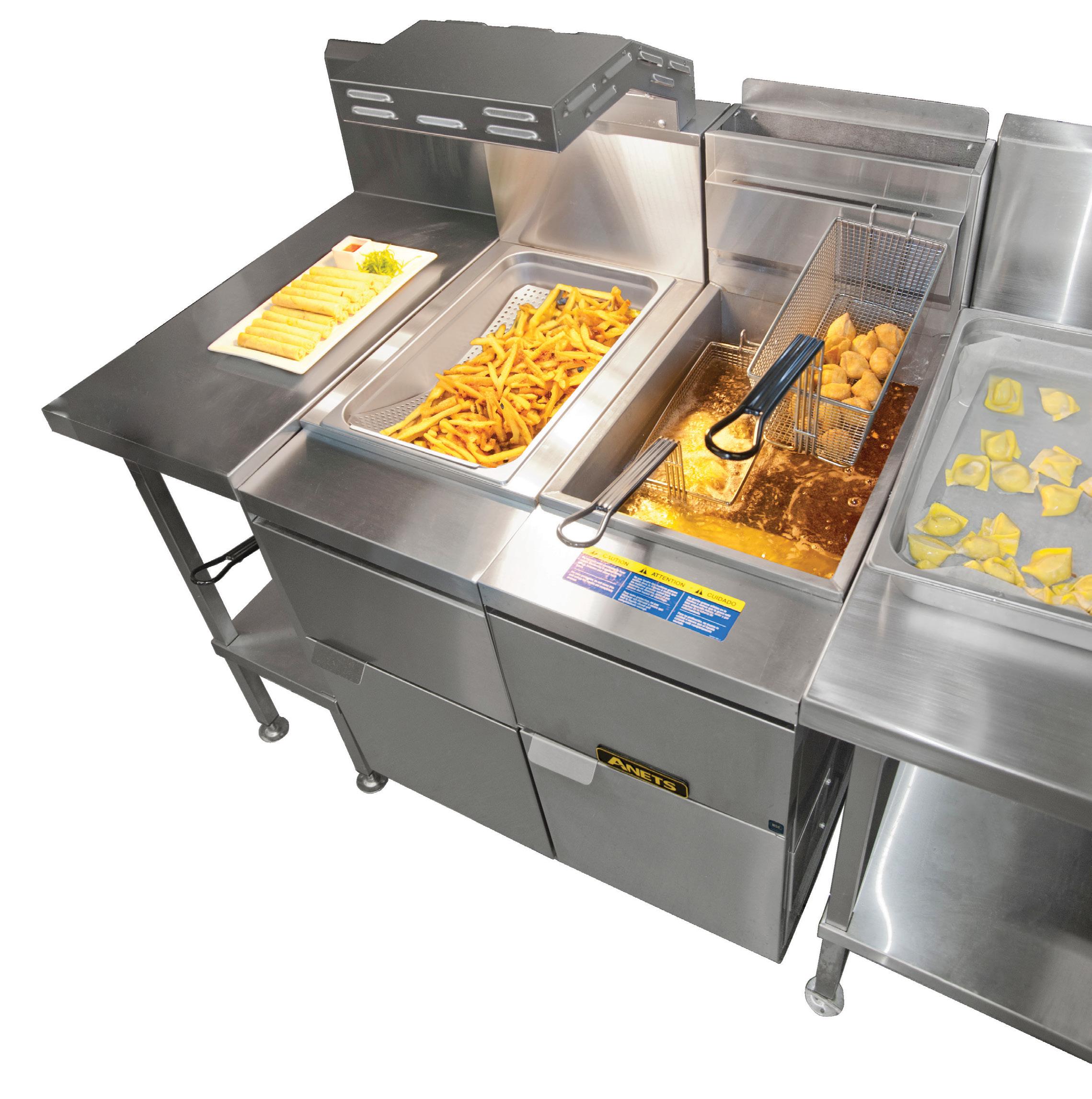
The owner of Mayfair Lane on her early career and how she ended up running one of Perth’s original gastropubs.

I WORKED IN London and Montreal during the 1990s. My own experience started in London and was dominated by women, whereas Montreal was dominated by men, therefore you had to act accordingly. I worked harder, faster, and longer hours in heels and red lips. I also had to know more than anyone else, as I was often the only female on the floor or in a management position, so I felt I had to prove my worth.
The moment I realised the hospitality industry was for me was when I was an openings manager for a pub group in London. We transformed tired venues into gastropubs and bars. One was called Dusk in Marylebone. After opening night, the staff and I kicked off our shoes and drank, ate, and danced the night away. It was the ultimate feeling of success and achievement after weeks of endless and sleepless nights. There’s nothing like opening with such applaud and doing it with your hospo family.
When we opened Mayfair Lane in 2016, gastropubs didn’t exist in Perth. We were ridiculed for opening a ‘gastro’
pub where everyone would end up being sick. But once we ironed out that issue, every pub became a gastropub. I like to think we pushed the boundaries for pub standards, professionalism, and better food and beverage offerings, especially wine. I couldn’t believe the by-the-glass
It’s the industry we call hospitality — it’s the second family you never knew you needed.
options were just Sauvignon Blanc Semillon blends, or sweet Riesling.
At the moment I’m a big fan of wines grown in volcanic soils from Etna in Italy as well as wines from Naousa in Northern Greece; Sierra de Gredos in Spain (high-altitude Garnacha); and lighter styles from Lujan de Cuyo in Argentina and Frankland River. When it comes to curating a wine offering, start
with what you love, add what they love, and then fill in the gaps. Also, know your target market. You have to taste everything and be completely and utterly objective about what is going to sell, how you are going to present it, and how much information to give the customer. I celebrate the place and the terroir (quite contentious). My list is divided into countries instead of style or grape.
The most valuable lesson I’ve learned as a hospitality operator is to know who you are, where you want to go, and stick with it. Changing it up half way through can show a lack of confidence and vision. However, once you are there, maintaining momentum and relevancy is tough, especially in the current climate. Once you are in the Australian hospitality industry, you are there for life. People have your back and respect you, but to be fair, this is the same in all the different countries I have worked in. It’s not just Australia per se, it’s the industry we call hospitality — it’s the second family you never knew you needed. ■





